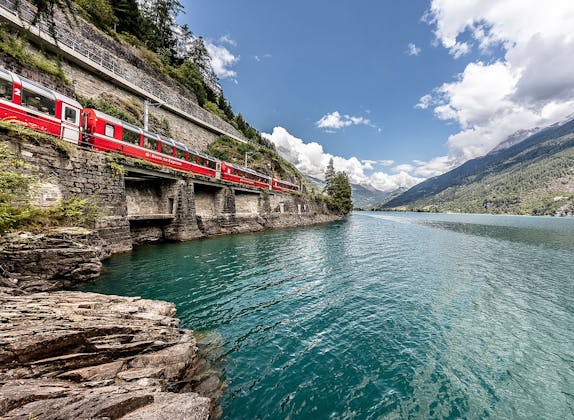
Swiss Travel Pass
Validity: All day

With a full eight days in Switzerland, you have several options to plan your perfect itinerary. There’s plenty to see and do in a week in Switzerland. Our selection of ten itineraries will help you organise your trip. It shows you different options that are all doable in eight days starting either in Zurich or in Geneva. All of the following itineraries are also adaptable so that you can start along the way or in a different city. This way, you can make the most of your time in Switzerland.
Even though Switzerland is small, there’s more than enough to see and do in eight days. With the great variety of landscapes, you’ll be glad you can spend a little longer in this wonderful country. If you’re planning your trip to Switzerland, the following itineraries will help you out.
All of these are doable in eight days and start either in Zurich or Geneva. But if you’d prefer to begin in a different location, you can easily adjust your trip accordingly. Zurich is well-connected and can be reached from any other city in Switzerland. The same goes for Geneva if you want to start in a city in the west.
Some itineraries end in Geneva or pass through cities near Geneva. So if you’re planning to travel through western Switzerland, you can easily tailor the itinerary to your preferences. For instance, there’s a route that starts in Zurich and passes through Lausanne before ending there. If you start in Geneva, it’s simple to begin this itinerary in Lausanne, which is only half an hour by train from Geneva.
You’ll notice we’re talking about traveling by public transport rather than by car. Most routes can also be done by car if you decide to rent one during your stay in Switzerland. However, with our very dense network of trains and buses, it’s really not necessary to travel by car.
Of course, the choice is yours. But if you’re traveling by train, we recommend getting a rail pass. Since you’ll be using public transport a lot, an Interrail, Eurail, or Swiss Travel Pass makes your travel significantly easier.
And if you have more than eight days available and see a route you like, you can easily extend it by spending an extra night in some places.
Have fun planning!
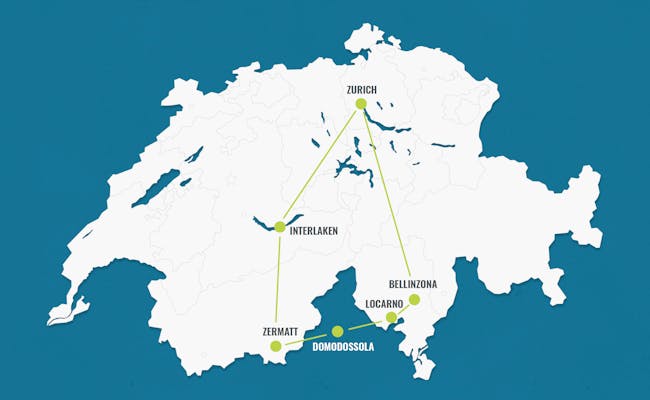
Highlights on this itinerary:
Explore Zürich on your own in the morning, rent a free bike with "Züri rollt" or join a guided city tour. After the tour, grab a take-away lunch and take the train to Bellinzona.
Thanks to the 57 km long Gotthard Base Tunnel, you can now ride through the Alps and reach the warm southern Switzerland in less than two hours.
Make a stop in Bellinzona to visit the Castello di Montebello, a UNESCO World Heritage site, before continuing on to Locarno.
Spend the rest of the evening soaking up the Italian atmosphere in Locarno. Hang out at Piazza Grande, stroll along Lake Maggiore, or treat yourself to some ice cream by the lake. And just in case you're wondering: Yes, you're still in Switzerland, even though it feels more like Italy.
Since you'll be spending the next three nights in Ticino, you'll be eligible for the fantastic Ticino Ticket. You'll receive it when you check in at your accommodation.
With this handy guest card, you can use public transportation throughout Ticino for free. Plus, you'll get various discounts on other attractions and activities.
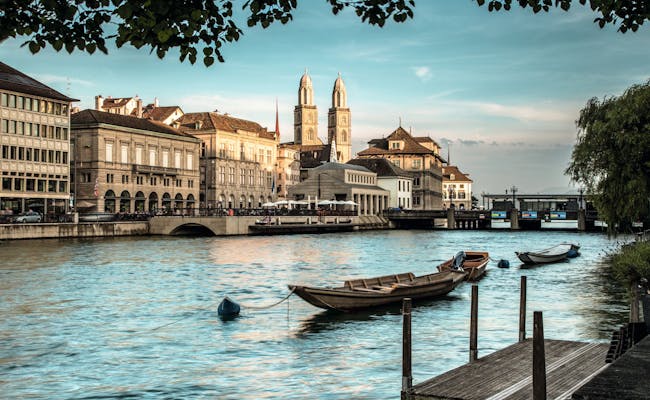
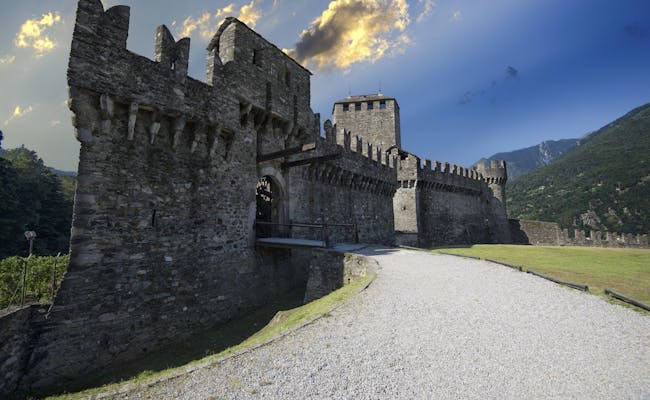
Get ready to explore the Italian part of Switzerland in all its glory. With so many activities to choose from, you won't be bored today.
First up, we recommend heading to one of the two river valleys: Maggia or Verzasca. Both are fantastic for hiking, spending time by the river, or taking a refreshing dip. Don’t forget to pack your picnic. There are countless spots to take a break in both valleys. One of our favorite places is right beneath the famous stone bridge in Lavertezzo.
If you prefer calmer waters over cold mountain streams, you should visit Lake Maggiore or Lake Lugano. Both lakes are stunning and offer more photo opportunities than you can imagine.
Other popular destinations in Ticino include the inspiring art town of Ascona near Locarno and the city of Lugano further south.
If you want to brush up on your Swiss geography, check out Swissminiatur in Melide just outside Lugano. It's a miniature version of Switzerland and showcases incredible attention to detail.
If you're one of those adrenaline junkies, at the end of the Verzasca Valley, there’s the 007 Bungy. You might have seen this 220-meter jump in the James Bond film GoldenEye. If you decide to take the plunge from the dam, don’t forget to share your photo with us. We’d love to see it… 🙂
As you may have noticed, this day is definitely not long enough to get through everything on the list. Good thing there’s always tomorrow.
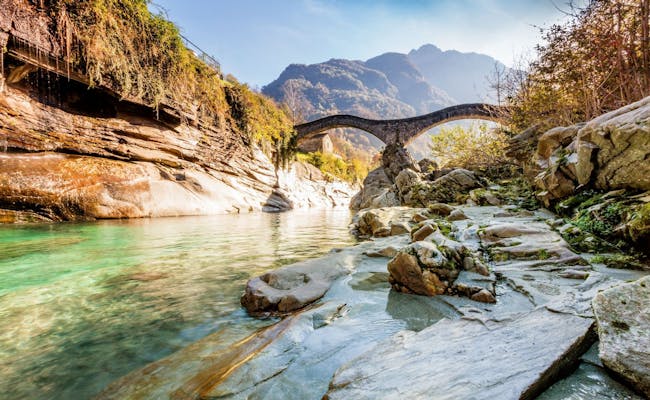
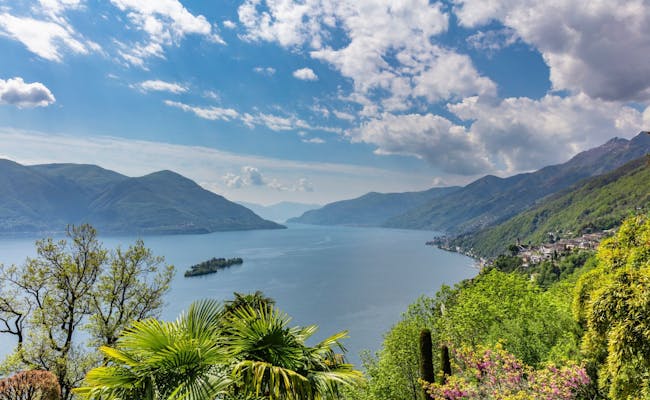
Knock yourself out doing whatever you missed out on yesterday. The list should be long enough to keep you busy for another day. Alternatively, leave Switzerland and hop across the border to Italy.
Not far from Lugano lies the idyllic Como region, the place where George Clooney and other celebrities got married. If you’re curious to find out what Mr. Nespresso saw in this part of the world, today’s your chance.
The two main places we recommend visiting in the area are the city of Como and the village of Menaggio. Both are situated by the shores of Lake Como and will automatically make you take a step back and enjoy the laid-back atmosphere.
At the end of the day, head back to Switzerland and spend whatever time you have left in Locarno before moving on to Zermatt tomorrow.
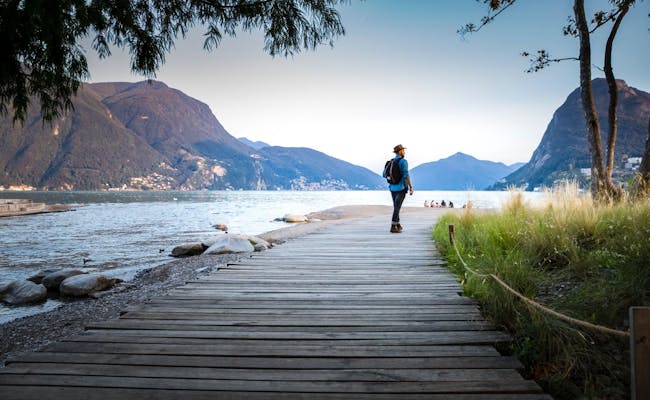

You’re probably going to laugh now. But the station your train to Domodossola leaves from is called Locarno FART. Unfortunate name, we know. It’s short for Ferrovie Autolinee Regionali Ticinesi and translates to “regional railway of Ticino”.
The ride to Domodossola lasts just under two hours. It might be the slowest train you’ve ever been on but chances are you won’t even notice time passing by.
The landscape is beyond stunning from start to finish. As you travel through the impressive Centovalli region – which stands for one hundred valleys – you’ll pass several charming villages with old stone houses, ride across tall viaducts and even catch a glimpse of a waterfall or two.
Enjoy the views because from Domodossola to Brig, you’ll be spending most of the time in a tunnel. That’s ok though because the ride from Brig to Zermatt is part of the Glacier Express – another scenic train ride.
Once you arrive in Zermatt, spend the rest of the day strolling through this little town and enjoy the sight of the mighty Matterhorn. Provided it’s not veiled in clouds.


Zermatt is all about the mountains and nature. If you came to Switzerland for the spectacular mountain views, you'll love it here.
There are countless hikes and walks of all difficulty levels that take you to places you didn't even know existed. For example, the popular Zermatt 5-Lake Walk takes about 2.5 hours. It passes five crystal-clear mountain lakes and offers breathtaking views of the Matterhorn along the way.
Another adventure that might get your head spinning is crossing the world's longest pedestrian suspension bridge in Randa. It's a whopping 494 meters long and spans across the valley. The circular trail to the bridge starts and ends in Randa, just a 15-minute train ride from Zermatt.
If you'd rather skip the hike and see the mountains the easy way, we recommend taking a ride up to Gornergrat. After an incredibly steep train journey, you'll find yourself at an altitude of 3,089 meters above sea level, right in front of the Gorner Glacier and the Matterhorn. Don't be surprised if you find yourself out of breath climbing the stairs to the lookout point; it's not you, it's the thin air.

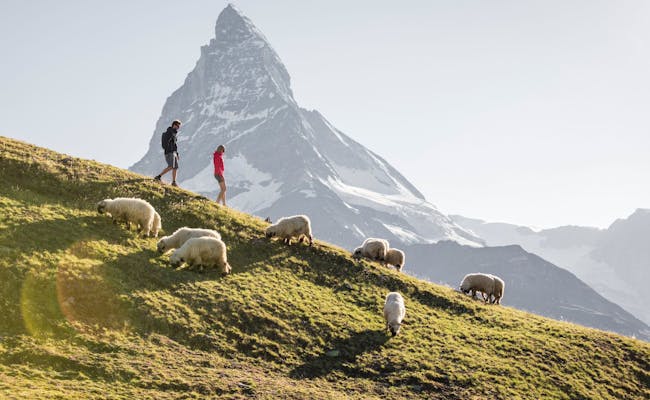
How you spend today is completely up to you. One option is to stay a bit longer in Zermatt and continue hiking, looking for marmots, skiing, strapping on snowshoes, taking photos of glaciers, or whatever else you have in mind.
If you've had enough of the thin air, travel on to Interlaken. Spend the rest of the day exploring this popular town and get ready for tomorrow. You'll be spending the whole day in this thrilling and picturesque spot.
Since there are so many options in this area, check out tomorrow's suggestions to see if you can tick something off your list this afternoon. Maybe you feel like a quick trip to Lauterbrunnen or a ride up to Harder Kulm to enjoy an amazing view?

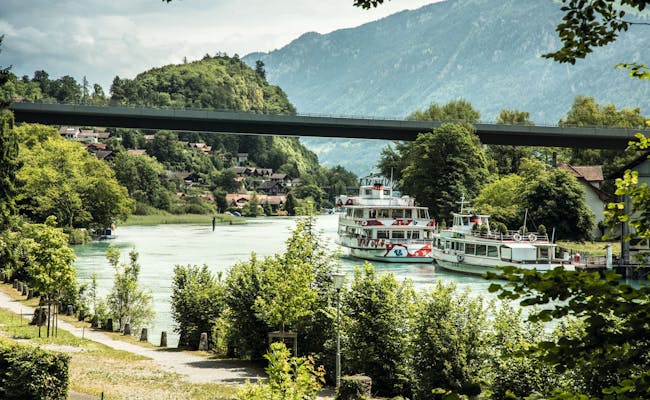
Today, you have more activities to choose from than you can imagine. It all depends on your budget, but in an adrenaline-filled place like Interlaken, the sky's the limit.
If anything!
Skydiving, paragliding, canyoning, and jet boating are popular activities that will get your adrenaline pumping.
A slightly more relaxed option is a ride on a passenger ship across Lake Thun or Lake Brienz. On both lakes, you'll be treated to incredible views, and you'll wish you never had to leave. If you'd like to make a stop during one of the boat trips, you can disembark either at Giessbach (Lake Brienz), at the St. Beatus Caves, or in Spiez (Lake Thun).
The Jungfrau region around Interlaken is also an excellent place for hikers. The number of hiking trails is virtually endless. Regardless of your fitness level and ambitions, you'll find something to suit your taste here.
Of course, the famous Jungfraujoch - also known as the Top of Europe - is the number 1 destination everyone wants to see. With the Jungfrau Railway, you’ll travel up to the highest railway station in Europe and find yourself amidst a stunning mountainous and glacial world.
If you're looking for a budget-friendly alternative to Jungfraujoch, we recommend instead visiting Schilthorn, Schynige Platte, Grindelwald First, or Männlichen. The rides to these mountains and the views from the summit won't disappoint.
Other attractions in and around Interlaken include: the Ballenberg Open-Air Museum, the chocolate workshop at Funky Chocolate Club, the two mountain lakes Blausee or Oeschinensee, and the Aare Gorge. And not to forget, the charming towns and villages like Brienz, Spiez, Thun, Lauterbrunnen, or Grindelwald.
We could go on forever here. But you'd probably just be annoyed that you’re not spending the whole week here.

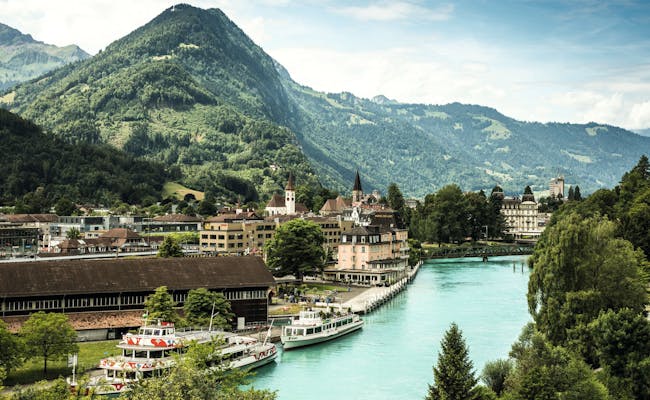
You probably didn’t get to do everything you set your mind to these past two days. This is why you have another day to knock yourself out in and around Interlaken today. Do what you need to do before heading back to Geneva in the late afternoon or evening. The train ride from Interlaken to Geneva takes roughly three hours and unless you have a plane to catch, there’s no rush to get back.
Or, if you’re leaving Switzerland from Zurich, head that way instead. The fastest connection leads through Bern and takes two hours. However, if you have time and fancy completing the Golden Pass Line, you have the option to travel to Zurich through Lucerne instead. This will take you an extra hour but is way more scenic than the journey through Bern.
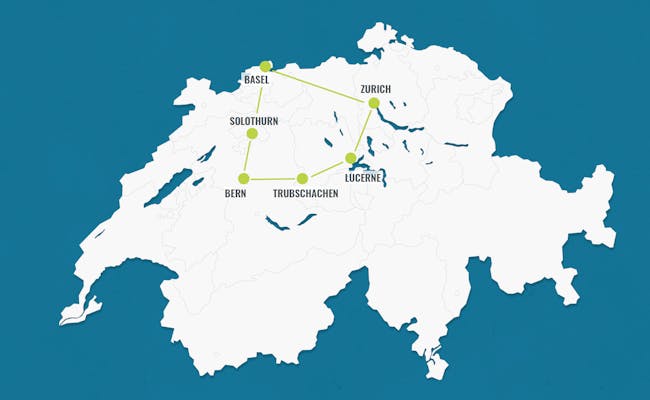
Highlights on this itinerary:
Verlasse Zürich am Morgen und nimm den Zug nach Luzern. Verstaue dein Gepäck entweder am Bahnhof oder in deiner Unterkunft und nimm dann den nächsten Zug nach Arth Goldau. Von dort bringt dich die Rigibahn - die erste Bergbahn Europas - in einer 45-minütigen Fahrt zur Bergstation Rigi Kulm.
Wenn die Rigi nicht in Wolken gehüllt ist, erwartet dich eine spektakuläre Aussicht auf die Alpen, den Vierwaldstättersee und andere umliegende Seen. Folge einfach den Schildern zum Aussichtspunkt, nachdem du in Rigi Kulm ausgestiegen bist.
Nachdem du genug Fotos gemacht hast, kannst du im Restaurant eine Pause einlegen, mit dem Zug nach Vitznau hinunterfahren oder wandern gehen. Mit über 120 Kilometern an Wanderwegen hast du hier die Qual der Wahl.
In Vitznau wartet das Passagierschiff nach Luzern auf dich. Halte deine Kamera bereit, denn die Fahrt ist landschaftlich beeindruckend und bietet noch mehr atemberaubende Ausblicke.
Zurück in Luzern kannst du den Rest des Abends verbringen, um die Stadt zu erkunden oder dir einen gemütlichen Platz am See zu suchen, um zu entspannen.
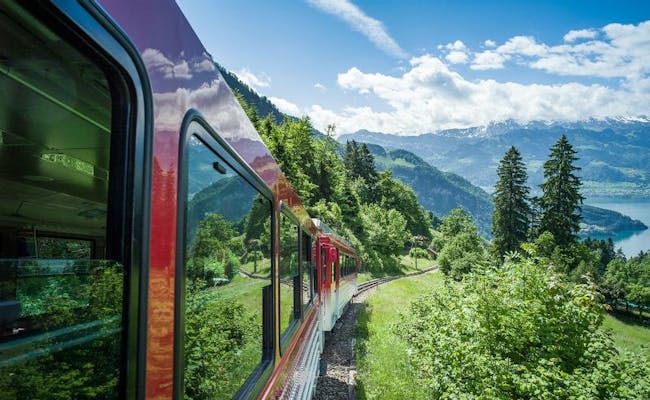

Lucerne has an incredible amount to offer. One of the most exciting excursions is taking the steepest cogwheel train in the world up to Pilatus, the local mountain of Lucerne. This train only operates in the summer from Alpnachstad, while the cable car from Kriens goes to Pilatus year-round.
Speaking of mountains: Titlis is another landmark in the region worth visiting. You can reach the peak from Engelberg using two gondolas. One of them is the world's first rotating cable car, so you can expect an impressive 360-degree view.
For an easy hike that includes a ride on a 152.8-meter high, rocket-like elevator, you can take a boat or bus to Kehrsiten-Bürgenstock.
Don't forget about Stanserhorn, a mountain close to Lucerne that has a modern double-decker cable car. The best way is to take the boat to Stansstad, where you transfer to the cogwheel train for the first leg and ride the open-air gondola for the last part to Stanserhorn.
On this free day, you could technically also head to Interlaken. Leave Lucerne in the morning on the Golden Pass Line, spend the day exploring the picturesque area around Interlaken, and return to Lucerne in the evening.
Another great way to spend the day around Lucerne is a boat trip on Lake Lucerne. Various steam and passenger boats operate on the lake, offering a scenic excursion.
As you can see, Lucerne has plenty to offer on a sunny day. But the reality is that the weather isn't always so promising. In that case, we have a few cool indoor options for you.
For one, there's Aeschbach's Chocoworld in Root. The bus ride there takes about 30 minutes. Nothing brightens up a rainy day like tasty chocolate, right?
In Hergiswil, not far from Lucerne, you'll find what the Swiss affectionately call the "Glasi". The Hergiswil glassworks takes you through the glass-making process, lets you watch the professionals at work, and even gives you a chance to try glassblowing yourself. When was the last time you made your own glass?
Another bad weather option is the Swiss Museum of Transport in Lucerne. As the name suggests, this museum is all about transportation. From bicycles to astronautics, it's all included.

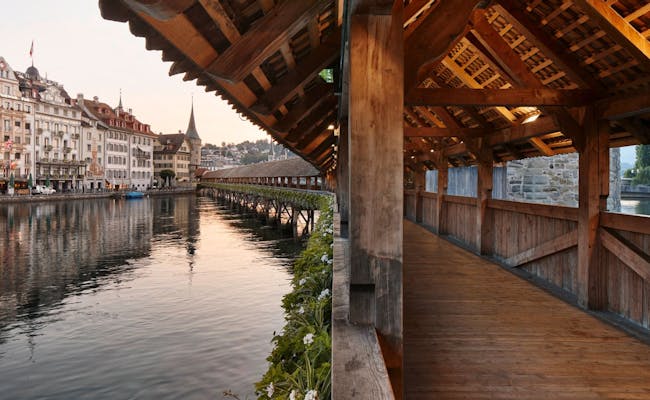
Luckily, you don’t have to leave Lucerne until lunchtime today. So spend the morning doing whatever you didn’t get to do yesterday. Whatever you do, make sure you work up an appetite and don’t grab too big a lunch for your ride to Trubschachen. You’ll need every free inch in your stomach for the biscuit-feast awaiting you.
Once you’re ready to move on, catch the train to Trubschachen. But watch out. This train gets split up along the way and only the front part travels through the picturesque Entlebuch region to the Kambly factory. When you’re at the platform in Lucerne, please check the display to make sure you get on the right half of the train.
The Kambly factory store right next to Trubschachen station is free to visit. In here, you can spend as much time as you like tasting up to 100 types of delicious biscuits. Unfortunately, you can’t visit the factory and watch the production of this iconic Swiss biscuit. However, they do have a cinema at the shop where they give you some more insight into this traditional family business.
After reaching the point of explosion, or maybe two biscuits before, move on to Bern. To digest your Kambly overdose, go for a walk in Switzerland’s capital city. For an impressive night view over Bern, we recommend heading up to Rosengarten.
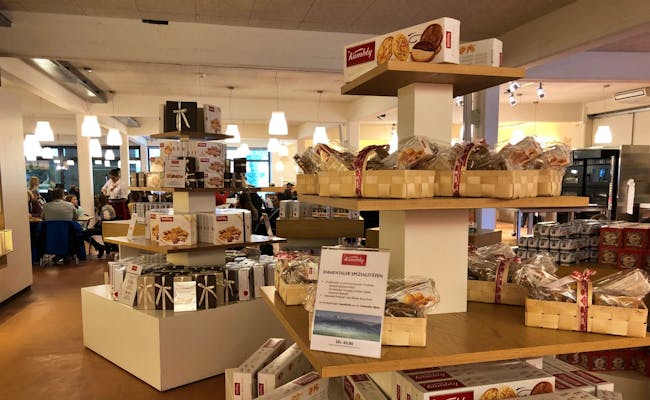
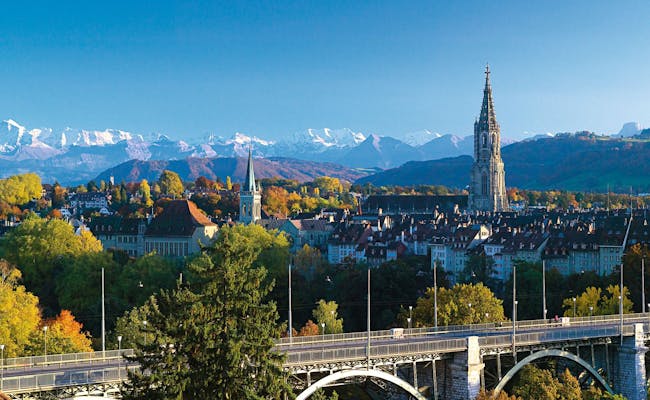
Today you can choose from a variety of activities. Join a city tour or explore Bern on your own. Stroll through the old town, visit the Bear Park, check out the Federal Palace, and walk back to the Rose Garden to enjoy the view.
You can also visit the Gurten - Bern's local mountain - watch the animals at the Dählhölzli Zoo, or check out the Botanical Garden. Take the lift at the train station and enjoy the view from the Great Schanze or go swimming in the Aare or at Weyermannshaus.
Bern is also close to a number of exciting day trip destinations. For instance, Thun and Interlaken are two wonderful places with spectacular lake and mountain views.
If you're interested in mountain lakes, you have two great options from Bern. Oeschinen Lake and the Blausee are easily accessible and worth more than one visit. The crystal-clear waters of both lakes will captivate you.
Just half an hour west of Bern is the medieval city of Fribourg. If you decide to go there, follow the signs for the city tour that lead you through the impressive old town. The signs guide you through steep alleys, over old wooden bridges, down to the Saane River, and past the funicular railway. For an even better view of your surroundings, you should climb the 365 steps to the Cathedral tower. The river Saane at the foot of the city is a great spot to stretch your legs and grab a snack.
You could even go further and head to Gruyères and Broc to enjoy some typical Swiss cheese and chocolate. Whatever you do today, return to Bern for your last night whenever you're ready.
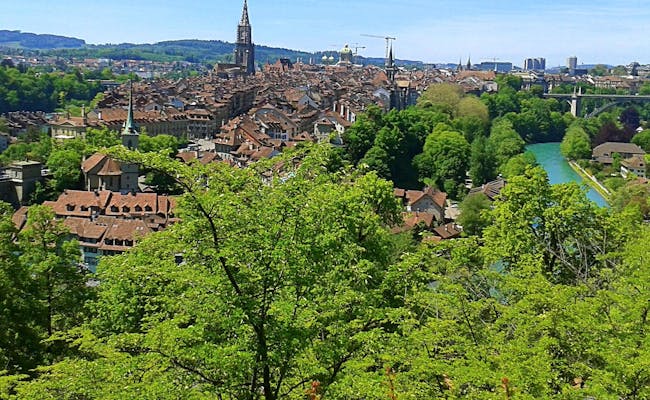
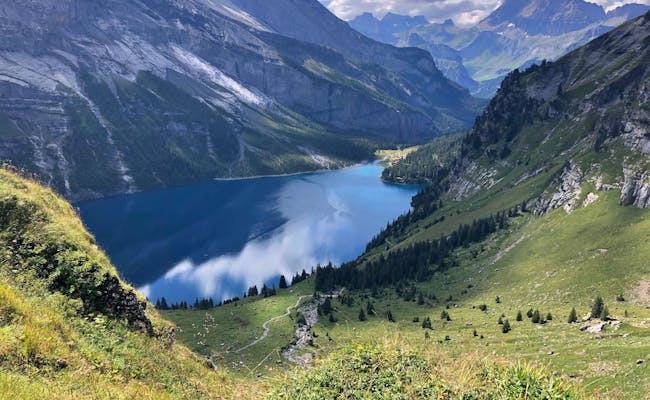
If there’s anything you wanted to do in Bern yesterday but ran out of time, get that over with in the morning and leave for Solothurn whenever you’re ready.
Solothurn is commonly known as “Switzerland’s most beautiful baroque city”. Take a stroll through this pretty old town and get ready to spend a full day in the area tomorrow. Also, go ahead and treat yourself to a few scoops of ice cream at Vitaminstation – one of the ice cream places ever – and have it while sitting on the stone wall along the River Aare.
You’ll fit right in with the locals in doing so.
Seraina’s Tip: My two absolute favourite places for food in Solothurn are Pittaria and Vitaminstation. Anyone that likes a good falafel or hummus is going to love Pittaria. And Vitaminstation makes some of the best ice cream I’ve ever tasted in Switzerland.
Although Solothurn is by no means a big city, there’s still plenty to see and do in the area. One activity we particularly recommend is going on a hike in the Jura mountains. This high plateau is a wonderful area to visit all year round.
One option to reach the top with its countless walking trails is by cable car from Oberdorf to Weissenstein. Feel free to walk as long and as far as you like before hiking back down or catching the cable car to Oberdorf.
A very popular hike is the round trip from Solothurn via Balmberg and Weissenstein. Catch the Postauto in Solothurn, get off at Balmberg, walk along the crest to Weissenstein and head back down to Oberdorf by cable car. From Oberdorf, the train will take you back to Solothurn.
This is an easy walk and takes you into the Jura without too much effort. During your hike, you’ll also enjoy the view over the Alps, including Eiger, Mönch and Jungfrau.
Another place you can visit is Verena Gorge. You can walk along the creek through the forest in the gorge until you reach the little hermitage at the end. The walk takes roughly 45 minutes return and is super peaceful.
Alternatively, hop on the passenger ship to Biel. How long you stay on it really depends on your preferences. You can go all the way to Biel – which takes around three hours – or get off anywhere along the way and catch the train back to Solothurn.
One of the highlights on this tour will be Switzerland’s largest stork station in Altreu, which you’ll pass about 45 minutes into the journey. In 1950, when storks were nearly extinct in Switzerland, Max Bloesch started his reintroduction project to save our storks. Thanks to him, around 40 breeding pairs can be seen soaring through the air, strutting across the fields and clattering on the rooftops around Altreu these days.
Only in spring and summer, though. They travel to warmer territories in autumn until winter is over.
If you continue your journey onward to Biel, the views of the Jura mountains and the Swiss Central Plateau will accompany you all the way. After passing through a watergate, you’ll arrive at the port in Biel, which is only a short walk from the train station.
From there, heading back to Solothurn will take 15 minutes by train.
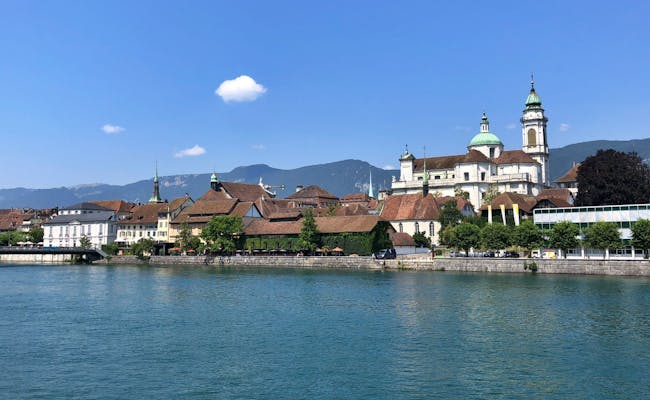

If you need a bit more time in Solothurn this morning, feel free to linger a little longer. When you’re ready, hop on the train and head over to Basel. The journey takes just an hour.
Basel is a vibrant city right on the German-French border. You'll find several city tours running at different times. You can either join a guided tour or explore the city at your own pace.
Stop by the Pfalz viewpoint—it's the perfect spot for some postcard-worthy photos—stroll along the Rhine and watch the big cargo ships coming in and out of the port. Pass by the cathedral or check out one of the many museums.
In the warmer summer months, join the locals for a swim in the Rhine. Before jumping in and floating downstream, they pack their clothes in a Wickelfisch. This waterproof bag is shaped like a fish and is a Basel trademark.

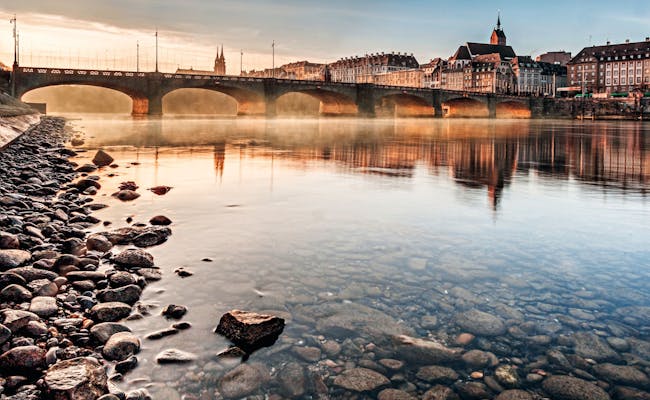
If there’s something you didn’t manage to see yesterday in Basel, today’s your chance. But if you’ve had your fill of the city, you can always hop across the border to Weil am Rhein in Germany or St. Louis in France.
Theoretically, you can even visit all three countries in one day: Switzerland, Germany, and France. This is definitely doable in Basel and is something you might not get to experience every day, especially if you come from a place where you have to board a plane just to reach the next border in a reasonable time.
When you’re ready to leave Basel, head back to Zürich and spend the rest of the day exploring Switzerland's largest city. Since you didn’t have much time on the first day, you might want to do some sightseeing in Zürich.
If time allows, you could round off this itinerary with a visit to the Lindt chocolate factory. Close to Zürich, in Kilchberg, you’ll find the brand-new Lindt visitor center that opened its doors to the public in September 2020. If you’ve never tried a roasted cocoa bean, eaten as many Lindor truffles as possible, or spent some time with the world’s tallest chocolate fountain, this is your chance.
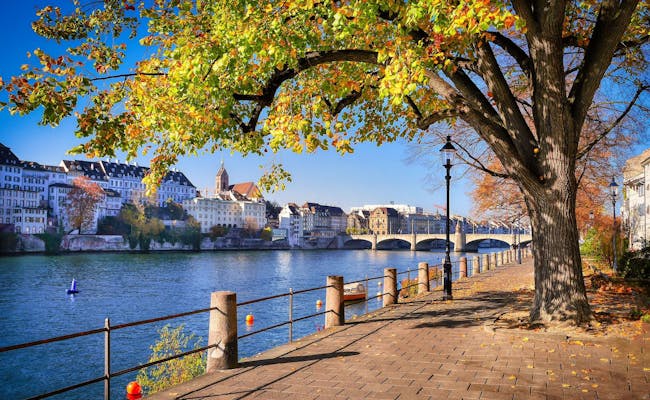

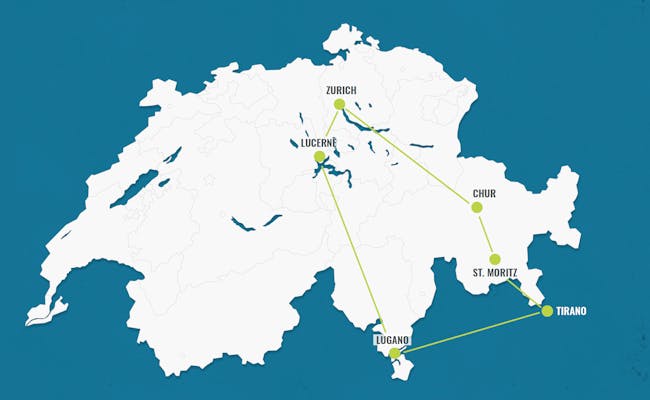
Highlights on this itinerary:
Explore Zürich on your own in the morning, rent a free bike with "Züri rollt", or join a guided city tour. After the tour, grab some takeout for lunch and enjoy it on the train to Chur.
To get a better view of Lake Zürich and Lake Walensee on your way to Chur, try to snag a seat on the left side of the train.
Spend a couple of hours wandering around Chur and get ready for the fresh mountain air that awaits you in St. Moritz. To get to St. Moritz, you can catch the direct RhB train in Chur. Keep your camera handy—the views will be stunning from start to finish. The Landwasser Viaduct and the winding Albula line are two highlights on this route.
Spend the rest of the day in St. Moritz. If you feel unusually sleepy tonight, it’s probably due to the altitude of 1,822 m above sea level. It usually takes a day or two to adjust to the thinner air.

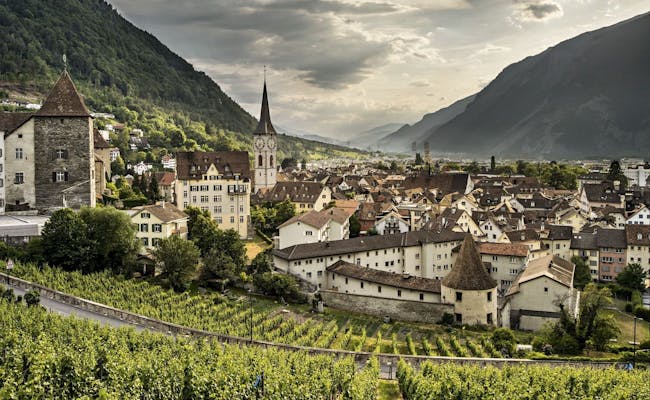
In St. Moritz dreht sich alles um Outdoor-Erlebnisse, sowohl im Sommer als auch im Winter. Egal, ob Radfahren, Wandern, Stand Up Paddling, Schwimmen, Windsurfen, Skifahren, Snowboarden, Schneeschuhwandern, Skilanglauf oder einfach nur für einen Spaziergang – hier findest du alles, was dein Herz begehrt.
Nur eine kurze Fahrt von St. Moritz entfernt liegt der Silvaplanasee, ein atemberaubender Ort für viele dieser Aktivitäten.
Ein weiterer Ort, den du dir nicht entgehen lassen solltest, ist das Ospizio Bernina. Mit 2'253 m ü.M. ist dieser kleine Bahnhof der höchste Punkt des Bernina Express Panoramazuges. Die Züge fahren stündlich ab St. Moritz und führen dich vorbei an Seen, Gletschern und majestätischen Berggipfeln.
Wenn es um die kulinarischen Genüsse geht, empfehlen wir dir zwei Dinge aus dem Engadin. Zunächst solltest du dir die Bündner Gerstensuppe nicht entgehen lassen. Diese Suppe mit Gerste, Gemüse und Fleisch ist ein typisches Gericht aus Graubünden und wärmt dich an kalten Tagen wie kein anderes.
Zweitens solltest du dir ein Stück Engadiner Nusstorte gönnen. Dieses schwere, köstliche Gebäck bringt die Kalorien genau dorthin zurück, wo du sie loswerden wolltest. Aber es ist mehr als wert!
Zurück in St. Moritz kannst du den Rest des Tages mit einem gemütlichen Stadtbummel verbringen. Obwohl St. Moritz nicht ganz so charmant und mystisch ist wie andere Dörfer in der Umgebung wie Samedan oder La Punt, ist es hervorragend für einen Schaufensterbummel geeignet. Wenn du Glück hast, siehst du vielleicht sogar den einen oder anderen Promi.
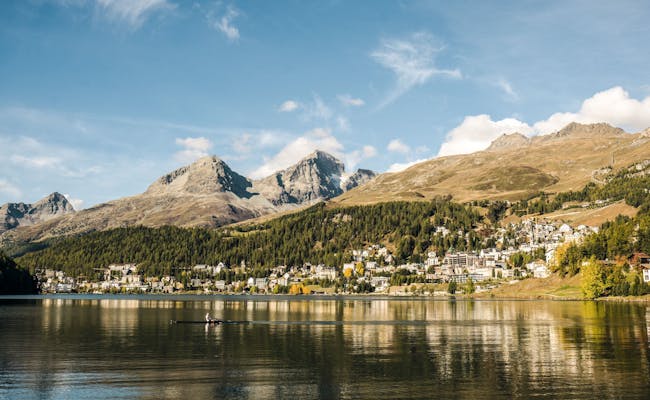

Today you'll spend some hours crossing the Alps from St. Moritz to Lugano. Your journey will take you up to the highest point of the Bernina Express line, past sparkling glaciers and crystal-clear mountain lakes, down into the southern part of Switzerland and over a spectacular viaduct before you reach Italy.
And finally back to Switzerland…
The first leg of this train ride takes you to Ospizio Bernina, the highest point of today's journey. This little station is not far from St. Moritz and is situated at 2,253 m above sea level. From here, it’s all downhill. Of course, only figuratively speaking. On your way down to Italy, you'll cross the circular viaduct in Brusio. Here, the train makes a full 360-degree turn to navigate the height.
By this point, you've already lost quite a bit of altitude, and the outside temperature is much warmer than it was just a few hours ago. The last leg of the journey begins in Tirano, right by the Swiss-Italian border. From Tirano, the Bernina Express bus will take you through the impressive wine region of Valtellina.
Before returning to Switzerland, you’ll pass by Lake Como, where George Clooney and many other celebrities have tied the knot.
After this long day, you can stretch your legs along the promenade of Lake Lugano. Enjoy the view, grab a few scoops of ice cream, and stroll through Lugano.
You’ve earned it.
Since you'll be spending the next three nights in Ticino, you’re entitled to the fantastic Ticino Ticket. You'll receive it when you check in at your accommodation.
This handy guest card allows you to use public transport throughout Ticino for free. Plus, it gives you numerous discounts on other attractions and activities.
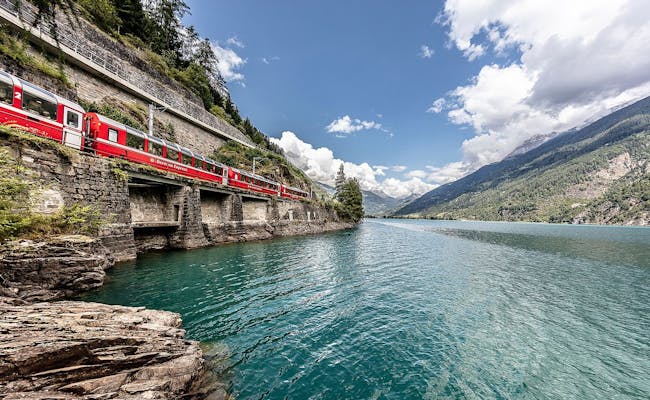
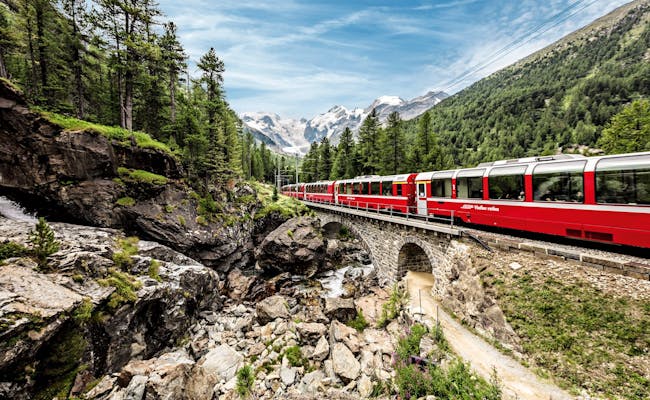
Get ready to explore the Italian part of Switzerland in all its glory. With so many activities to choose from, you won't be bored today.
First off, we recommend heading to one of the two river valleys: Maggia or Verzasca. Both are perfect for hiking, spending time by the river, or taking a refreshing dip. Don’t forget to pack your picnic. There are countless spots in both valleys to take a break. Our favorite place is right underneath the famous stone bridge in Lavertezzo.
If you prefer calmer waters to the cold mountain streams, you should visit Lake Maggiore or Lake Lugano. Both lakes are stunning and offer more photo opportunities than you can imagine.
Other popular destinations in Ticino include the inspiring art town of Ascona near Locarno and the city of Lugano further south.
If you want to brush up on your knowledge of Swiss geography, check out Swissminiatur in Melide just outside Lugano. It's a miniature version of Switzerland and showcases incredible attention to detail.
If you’re one of those adrenaline junkies, there's the 007 Bungy at the end of the Verzasca Valley. You might have seen this 220-meter jump in the James Bond film GoldenEye. If you decide to leap from the dam, don’t forget to share your photo with us. We’d love to see it… 🙂
As you may have noticed, this day is far from long enough to check everything off the list. Good thing there’s always tomorrow.
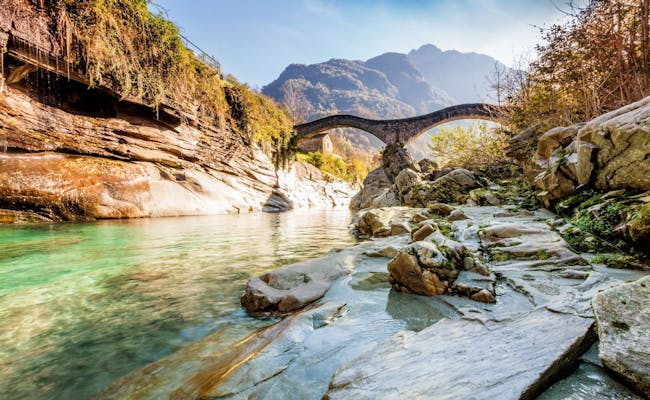
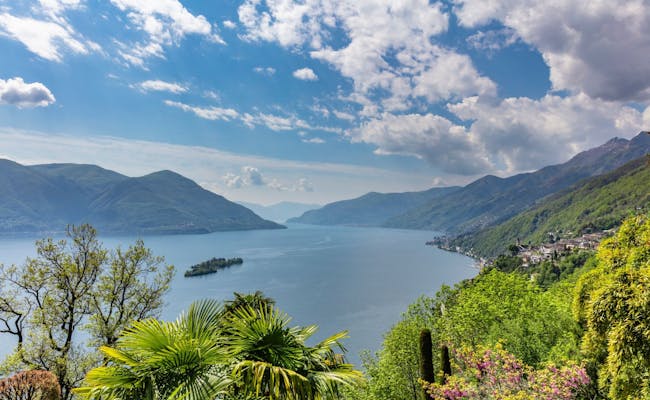
Knock yourself out doing whatever you missed out on yesterday. The list should be long enough to keep you busy for another day. Alternatively, you have the option to head across the border to Italy.
Not far from Lugano lies the idyllic Como region, the place where George Clooney and other celebrities got married. If you’re curious to find out what Mr. Nespresso saw in this part of the world, today’s your chance.
The two main places we recommend visiting in the area are the city of Como and the village of Menaggio. Both are situated by the shores of Lake Como and will automatically make you take a step back and enjoy the laid-back atmosphere.
At the end of the day, head back to Switzerland and spend whatever time you have left hanging out in Lugano before moving on to Lucerne tomorrow.
If you visit Switzerland between April and October, you’re in luck. As long as you don’t leave Ticino on a Monday, you can take the Gotthard Panorama Express to travel back over the Alps.
On the first leg of your journey, a panoramic train will take you through the old Gotthard Tunnel to Flüelen. Before the Gotthard Base Tunnel opened in 2016, this was the only way to reach Ticino by train. Nowadays, since the opening of the longest tunnel in the world, the old tunnel is used solely for tourist purposes.
In Flüelen, you’ll enjoy a three-hour boat ride on Lake Lucerne. You’ll arrive in Lucerne at around 3:00 PM, right next to the train station. This gives you plenty of time to explore this charming city and its surroundings. If you can't take the Gotthard Panorama Express to Lucerne, just hop on the regular train instead.

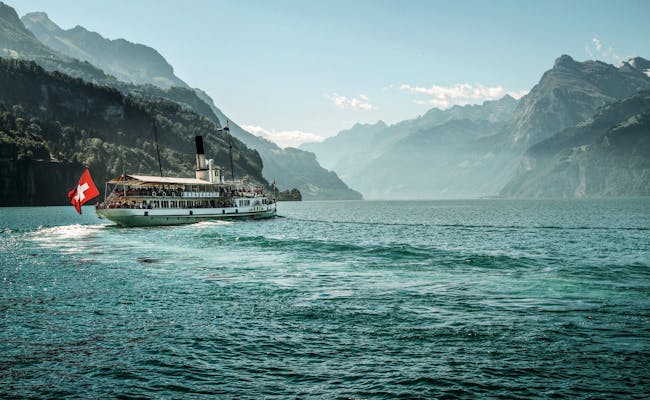
Lucerne has an incredible amount to offer. One of the most exciting trips is the ride on the steepest cog railway in the world to Mount Pilatus, the local mountain of Lucerne. This train only operates in summer from Alpnachstad, while the cable car from Kriens runs all year round to Mount Pilatus.
Speaking of mountains: Mount Titlis is another landmark in the region worth visiting. You can reach the summit from Engelberg using two gondola lifts. One of them is the world's first rotating aerial cable car, offering you an impressive 360-degree view.
If you're looking for an easy hike that includes a ride on a rocket-like elevator standing 152.8 m tall, you can take a boat or a bus to Kehrsiten-Bürgenstock.
Don't forget about the Stanserhorn, a mountain near Lucerne that you can reach via a modern double-decker cable car. It's best to take the boat to Stansstad. Here, you'll transfer to the funicular for the first stage and then take the open-air gondola for the final stretch to the Stanserhorn.
On this free day, you could also theoretically head to Interlaken. Leave Lucerne in the morning on the Golden Pass Line, spend the day exploring the photogenic region around Interlaken, and then return to Lucerne in the evening.
Another great way to spend the day around Lucerne is to take a boat ride on Lake Lucerne. Several steam and passenger ships operate on the lake, taking you on a scenic excursion.
As you can see, Lucerne has a lot to offer on a sunny day. But in reality, the weather isn't always that promising. In that case, we have some cool indoor options for you.
First, there's Aeschbach's Chocoworld in Root. The bus ride there takes about 30 minutes. Nothing brightens up a rainy day quite like delicious chocolate, right?
In Hergiswil, not far from Lucerne, you’ll find what the Swiss lovingly call the "Glasi". The Hergiswil Glassworks takes you through the process of glass-making, lets you watch the professionals at work, and even offers the chance to try glassblowing yourself. When was the last time you made your own glass?
Another option for bad weather is the Swiss Museum of Transport in Lucerne. As the name suggests, this museum is all about transportation. From bicycles to astronautics, it's all covered.
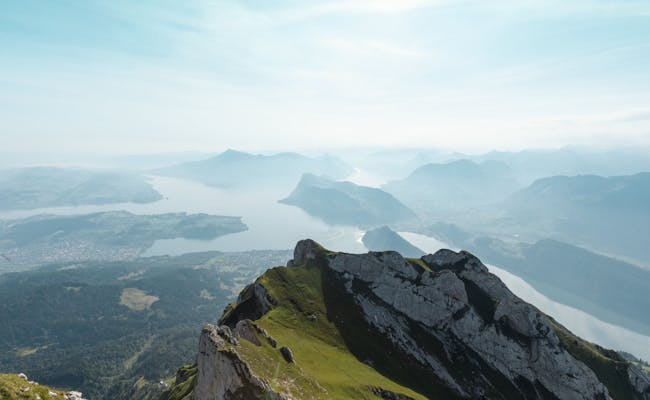

Luckily, you have no rush today, so you can enjoy Lucerne until the afternoon or even the evening. This gives you plenty of time to do everything you didn't manage yesterday.
A popular day trip from Lucerne is a visit to Mount Rigi. To get there, you can either store your luggage at your accommodation in Lucerne or at the train station, and then take the train to Arth Goldau. From there, the Rigi railway - the first mountain railway in Europe - will take you to the Rigi Kulm summit in a 45-minute ride.
If Rigi is not shrouded in clouds, you'll have a spectacular view of the Alps, Lake Lucerne, and other nearby lakes. Just follow the signs to the viewpoint after you get off at Rigi Kulm.
Once you've taken enough photos, you can either take a break at the restaurant, descend to Vitznau by train, or go for a hike. With over 120 kilometers of hiking trails, you have plenty of options here.
When you arrive in Vitznau, the passenger ship to Lucerne will be waiting for you. Keep your camera ready, as the ride offers stunning scenery and even more breathtaking views.
Back in Lucerne, you can pick up your luggage and head back to Zurich.
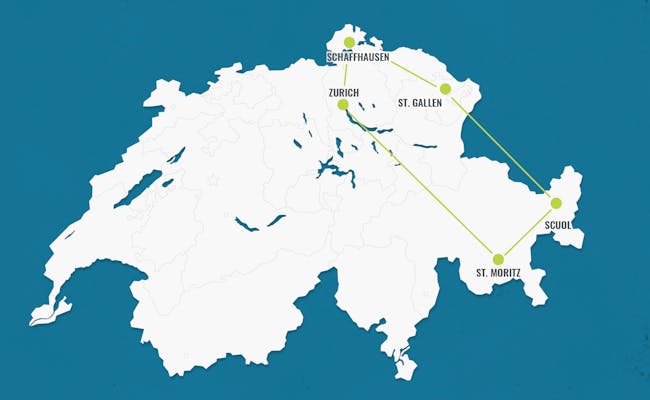
Highlights on this itinerary:
In the morning, explore Zurich on your own, borrow a free bike with «Züri rollt» or join a guided city tour. After the tour, grab some take-away lunch and have it on the train to Schaffhausen.
Head straight to Neuhausen next to Schaffhausen, where the mighty Rhine Falls attract visitors from all over the world. Access to the falls is free from the northern shore, while seeing them from Laufen Castle in the south costs 5 CHF. Spend however long you like getting soaked in the mist of the Rhine Falls before moving on to Schaffhausen.
Schaffhausen has a charming old town with an impressive total of 171 bay windows, which is more than any other Swiss city can account for. Once you’re done chasing them all down and exploring the rest of Schaffhausen, head up to Munot and enjoy the view over the city.


After breakfast, you pack your things and take the train to St. Gallen. You have the whole day to explore the city and its surroundings in all their glory.
With its UNESCO-protected Abbey District, its impressive cathedral, and the remarkable Abbey Library, this city has a lot to offer.
Make sure not to miss the recreational area "Drei Weieren". You can get there either by the Mühlegg funicular or walk up one of the many stairways. Alternatively, you can visit the Peter & Paul Wildlife Park or quench your cultural thirst in one of the many museums.
The absolute best spot to unwind is at the "Drei Weieren". Here you can go swimming or take a walk through the forest. Plus, you'll have a fantastic view over the entire city, Lake Constance, and even into Germany.
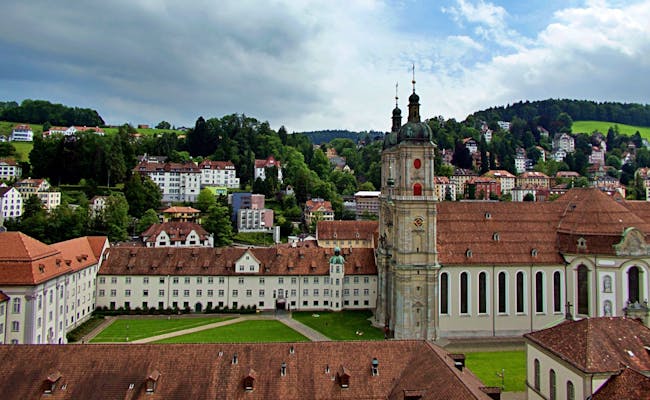
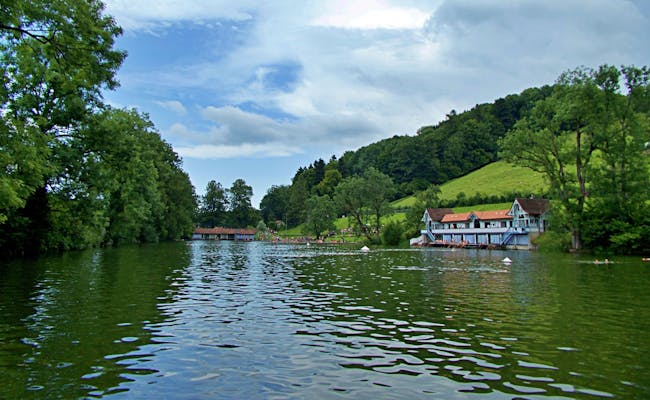
Today, you’re in for some serious hiking and a ton of impressive mountain views. In the morning, catch the train to Wasserauen and hike up to Seealpsee, one of the three lakes in the Alpstein mountain range. Spend some time in this peaceful spot before moving on to Ebenalp.
On your way to Ebenalp, you’ll pass by a place you might have seen before. The famous Äscher restaurant. Ever since it was featured on National Geographic and on Ashton Kutcher’s Instagram, it‘s been completely overrun by its success. This sadly caused it to lose some of its former charm. However, it’s still a worthwhile place to snap a few photos and take a break.
At Ebenalp, you can choose between hiking back to Wasserauen or catching the cable car. If you still have it in you after this long day, you might like a quick stopover in Appenzell on your way to St. Gallen.
In case you hop off in Appenzell and are feeling brave, visit the little cheese store at Hauptgasse 13. But be warned, those smelly cheese fumes will knock your socks off the second you enter the store. There’s no way your feet will be able to compete with that odour. Not even after a full day of being trapped inside your trekking boots... 🙂
Oh, and don’t miss out on a piece of Appenzeller Biber, an iconic local sweet treat made of gingerbread and a honey almond filling. And before you ask: Nope. This Biber doesn’t have any famous Canadian relatives...
Also, if you’re a beer-lover, make sure to stop by the Locher brewery. They brew the popular Quöllfrisch beer that is consumed all across Switzerland.
In the evening, head back to St. Gallen and enjoy sleeping like a baby tonight. Fresh mountain air has a tendency to leave you peacefully exhausted.
As an alternative to hiking and crawling around in the Alpstein, you can head to Lake Constance instead and enjoy some downtime by the lake.
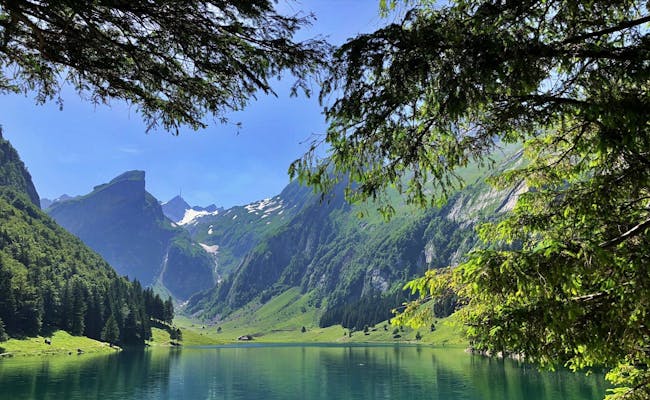
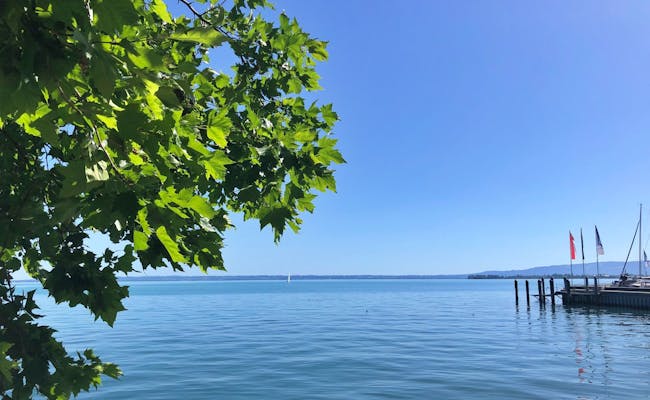
What time you continue your journey today is entirely up to you. The train ride to Scuol takes just under three hours and even if you stick around in St. Gallen until the afternoon, you can still make it to Scuol in time.
So catch the train whenever you’re ready and travel to the marvellous Engadine region in the Canton of Grisons. The Engadine has to be one of the most magical places in Switzerland. Especially during autumn, when the leaves turn yellow, orange and red. But throughout the rest of the year, it’s just as fantastic a place to visit.
Enjoy the rest of your day exploring Scuol and get ready for a few days of being surrounded by mountains, forests, rivers, lakes and plenty of Swiss wildlife.
Ever seen a marmot? Chances of seeing one in the near future are pretty good.


These next two days, you’re going to explore Switzerland’s only national park in all its glory. Leave your luggage in Scuol and only take what you need for your hiking excursion. If you ask nicely, they might let you leave your luggage at your accommodation in Scuol until you come back from the mountains tomorrow night.
The rules that apply when visiting Switzerland’s only National Park are pretty strict. There’s no leaving the marked trails, no taking plants with you, no making fires and so on. Once you arrive at the gates of the park, please read the signs or stop by the visitor centre in Zernez to make sure you’re prepared.
What you probably weren’t expecting is that visiting the park is free. Everything in Switzerland seems to be more expensive than anywhere else in the world. And yet, while you pay an entrance fee to pretty much every National Park in the world, ours is free. Pretty cool, right?
Since the only place to spend the night inside the Swiss National Park is a mountain hut called Chamanna Cluozza, you’ve got one task to accomplish today. Get to Chamanna Cluozza.
One hike we recommend starts half an hour from Scuol, in the village of Zernez. From there, you’ll spend a good three hours until you reach your camp for the night. The hike isn’t too straining. And if you’re not the most experienced hiker, just give yourself enough time and you should be alright.
Enjoy this evening far away from civilisation without phone reception and sitting around a table chatting to strangers. You’ve earned it.
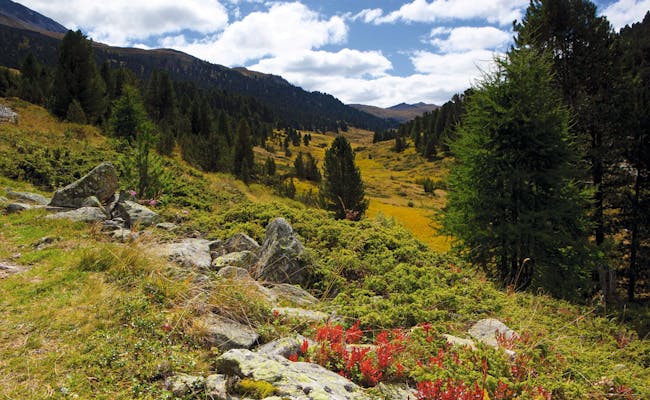

If you haven't planned today's hike yet, ask the owners of Chamanna Cluozza for their recommendations. You have many more hikes to choose from with varying difficulty levels. This gives you another day to explore the national park.
Alternatively, you can head back to Scuol right after breakfast if you're done hiking. The choice is entirely yours. If you're looking for a relaxing alternative, the Engadin is definitely the place to be.
On one hand, there's the thermal spa in Scuol. Depending on how sore your feet are from yesterday's hike, a few relaxing hours in the hot springs might be just what you need.
If not, we recommend visiting one of the nearby villages, like Guarda or Sent. The stone houses you see there are typical for this part of Switzerland.
And as you pass these impressive buildings, keep an eye out for a bakery. The famous Engadin nut cake comes from the Engadin. If you have a sweet tooth, you absolutely have to try a piece or two. This cake is quite rich and dense, but each calorie is worth it.
After breakfast, you leave Scuol and head to St. Moritz. You have the whole day to explore this stylish resort. It’s all about outdoor activities here, no matter the season. Whether you’re into biking, hiking, stand-up paddling, swimming, windsurfing, skiing, snowboarding, snowshoeing, cross-country skiing, or just taking a leisurely walk, you’ll find everything your heart desires.
Just a short drive from St. Moritz is Lake Silvaplana, a stunning spot to enjoy some of these activities.
Another place worth visiting is Ospizio Bernina. At 2,253 m above sea level, this small station is the highest point of the Bernina Express panoramic train. Trains depart hourly from St. Moritz, taking you past lakes, glaciers, and towering mountain peaks.
On the culinary side, we recommend trying a bowl of Bündner barley soup. This soup, made with barley, vegetables, and meat, is a typical dish from the region. It warms you up on a cool day like nothing else.
Back in St. Moritz, you can spend the rest of the day wandering through the town or relaxing by the lake. St. Moritz isn’t as charming or mystical as some other nearby villages like Samedan or La Punt, but it’s great for window shopping. And if you’re lucky, you might even spot a celebrity or two.

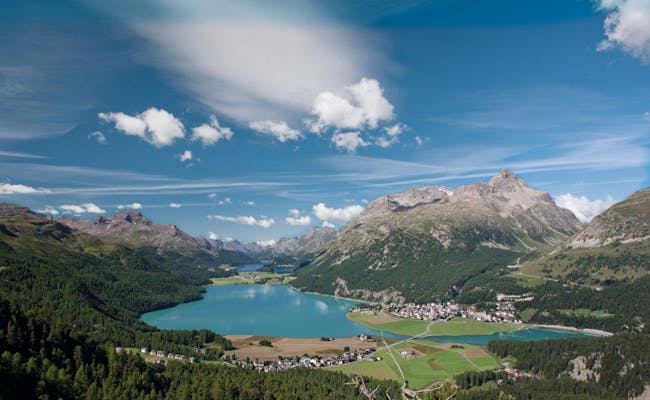
If there’s anything you didn’t get to do yesterday, today’s your chance. The train ride back to Zurich takes just over three hours so there’s no rush to leave just yet. However, if you’ve seen it all and you’re ready to move on, you’re welcome to hop on the train and spend some time anywhere along the way between St. Moritz and Zurich.
One place you might like is the dreamy village of Bergün with its impressive stone buildings that are iconic to this area. You’ll arrive in Bergün right after navigating the confusing Albula Line, the part where the train overcomes the altitude by taking a few loops and tunnels through the mountains. As you look out the window, you’ll notice the train crosses sides of the valley while spiralling down the mountains.
Another place you might enjoy between St. Moritz and Zurich is Walenstadt. Or more precisely, Lake Walensee. This beautiful lake is the perfect stopover. It’s a stunning and mystical lake and, depending on the weather and the light reflection, it sometimes reminds you of a Scottish loch.
Spend the rest of the evening in Zurich and snack on some more Engadiner Nusstorte by the lakeshore or at Lindenhof.

Highlights on this itinerary:
Start your day early in Zürich and catch the train to Luzern. You can store your luggage either at the station or in your accommodation before hopping on the next train to Arth Goldau. From there, the Rigibahn—the first mountain railway in Europe—will take you to the summit Rigi Kulm in a scenic 45-minute ride.
If the Rigi isn't covered in clouds, you'll be treated to stunning views of the Alps, Lake Lucerne, and the surrounding lakes. Just follow the signs to the viewpoint once you reach Rigi Kulm.
After you've taken enough photos, you can either take a break at the restaurant, head down to Vitznau by train, or go for a hike. With over 120 kilometers of hiking trails, you have plenty of options.
Upon arriving in Vitznau, the passenger ferry to Luzern will be waiting for you. Keep your camera ready, as the boat ride offers breathtaking scenery and impressive views.
Back in Luzern, spend the rest of the evening exploring the city or find a cozy spot by the lake to unwind.
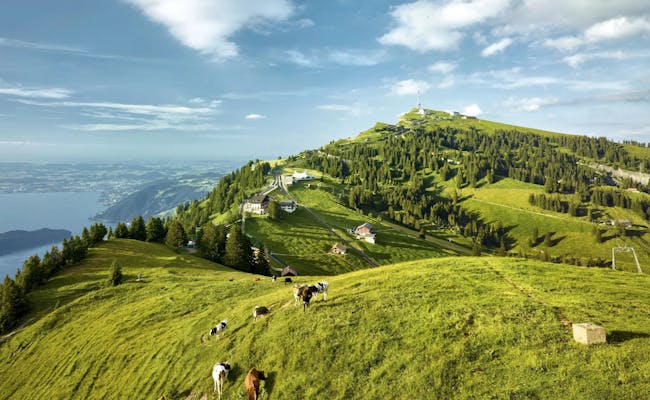

You have the whole day to explore Lucerne and its surroundings. For a more detailed list of ideas, check out Day 2 of Route No. 2.
If you decide to stay in the city, there are plenty of options to choose from. You can join a guided city tour, stroll through the old town, walk across the Chapel Bridge, relax by the lake, or visit the Glacier Garden with its famous Lion Monument. Hop on the Golden Pass panoramic train to Interlaken whenever you're ready.
The Golden Pass Line is a popular scenic route from Lucerne to Montreux, operated by several train companies. It connects the heart of Switzerland with the shores of Lake Geneva.
This panoramic route passes by eight lakes, travels through six different cantons, crosses three mountain passes, and connects two language regions. The journey today between Lucerne and Interlaken is operated by the Zentralbahn and takes just under two hours.
When you arrive in Interlaken, you’ll spend the evening in this popular and very touristy city. The activities here are endless, and if you want to fully enjoy this region, you'll be happy to spend three nights here. So, get ready for two amazing days in Interlaken.
For the next two days, you have more activities to choose from than you can imagine. It all depends on your budget, but in Interlaken, the sky's the limit.
If at all!
Skydiving, paragliding, canyoning, and jet boating are popular activities that will get your adrenaline pumping.
A more relaxing option is a boat trip on Lake Thun or Lake Brienz. On both lakes, you'll be treated to incredible views, and you'll wish you never had to leave. If you want to make a stop on one of the boat trips, you can get off either at Giessbach (Lake Brienz), at the St. Beatus Caves, or in Spiez (Lake Thun).
The Jungfrau region around Interlaken is also a great place for hikers. The number of walking trails is almost endless. Regardless of your fitness level and ambitions, you'll find something that suits your taste here.
Of course, the famous Jungfraujoch - also known as the Top of Europe - is the number one destination that everyone wants to see. With the Jungfrau Railway, you’ll ride up to the highest railway station in Europe and find yourself in the midst of stunning mountains and glaciers.
If you're looking for a more budget-friendly alternative to the Jungfraujoch, we recommend visiting the Schilthorn, Schynige Platte, Grindelwald First, or Männlichen instead. The trips to these mountains and the view from the summit will not disappoint you.
Other attractions in and around Interlaken include: The Ballenberg Open-Air Museum, the chocolate workshop at the Funky Chocolate Club, the two mountain lakes Blausee or Oeschinensee, and the Aare Gorge. And let’s not forget the charming towns and villages like Brienz, Spiez, Thun, Lauterbrunnen, or Grindelwald.
We could go on forever here. But you’d probably just end up frustrated that you can't spend the whole week here.


Today, you're in for another scenic treat. As soon as you leave Interlaken heading towards Zweisimmen, you'll have Lake Thun on your right. To get the best view of the lake, we recommend snagging a seat on the right side of the train.
After a little over an hour's ride, you'll transfer to another train in Zweisimmen. Here, the climb through the Bernese Oberland to Gstaad begins. This region is a dream come true for mountain lovers and embodies almost everything that makes Switzerland special. You'll find an abundance of lakes, mountains, lush pastures with grazing cows, glaciers, plenty of hiking trails, stunning landscapes, and charming little villages.
In Gstaad, you have several options for how to spend your afternoon. Since this area is a paradise for hikers, you'll be spoiled for choice. One possible hike takes you to Lake Lauenensee, a mountain lake surrounded by moorland.
A trip that's easily doable from Gstaad is a visit to the impressive Glacier 3000. After a 35-minute bus ride to Col du Pillon, you'll arrive at the valley station of the cable car. Hop on the gondola and enjoy the ride. Once you reach the top, a breathtaking 360° view of the Alps awaits you.
On a clear day, you can see some of the most famous mountain giants of the Alps, like the Matterhorn, Mont Blanc, and the well-known trio of Eiger, Mönch, and Jungfrau. If you're feeling adventurous, you should try the Peak Walk to Scex Rouge. This is the world's first suspension bridge connecting two peaks. At Glacier 3000, there are also other activities like a toboggan run or a hike across the glacier.
As you stroll through Gstaad in the evening, keep an eye out for celebrities. Famous people can often be spotted here, just like in St. Moritz.
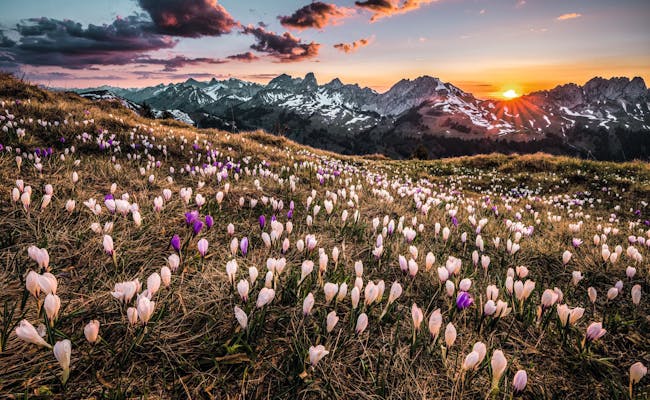
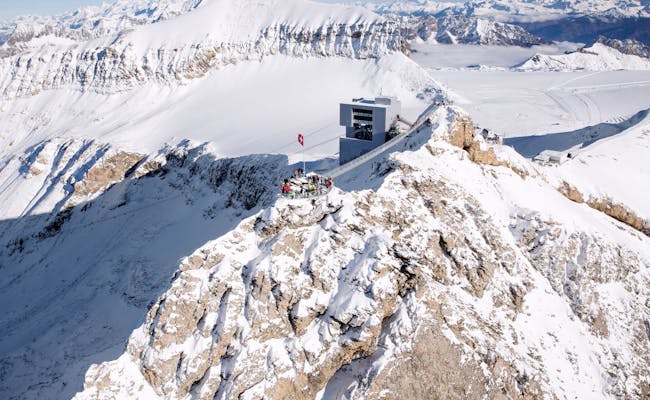
It's time to say goodbye to this beautiful region. After breakfast, hop on the Golden Pass train and continue your picturesque journey. Once you leave the Bernese Oberland and descend the hills, you'll arrive in the French-speaking part of Switzerland.
The Golden Pass Line ends in Montreux, where you'll spend the afternoon. Enjoy a few hours in this stunning area by Lake Geneva before heading to Bern.
Make your way to the promenade and check out the Freddie Mercury statue in front of the market hall. If you'd like to visit the famous Château de Chillon, you can either follow the promenade to the castle or catch a bus. Passenger boats also run regularly between Montreux and Château de Chillon.
Alternatively, you can head the other way to the Lavaux vineyards. Just a short train ride west of Montreux, you'll find the famous Lavaux vineyards, a UNESCO World Heritage site. To take in the gorgeous views, get off at Cully or Epesses and follow the marked hiking trail through the vines.
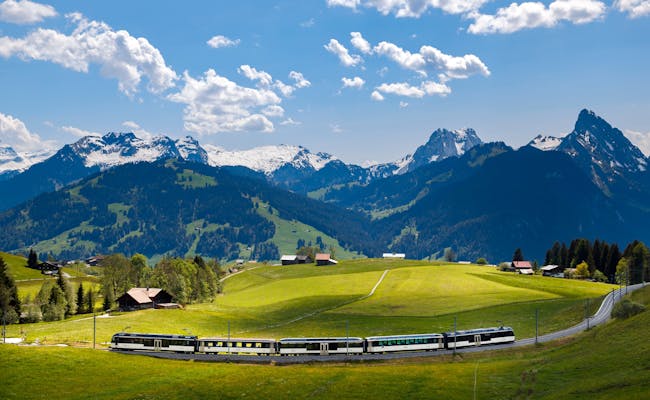

Today is all about cheese and chocolate, two things Switzerland is famous for. Take the train to Gruyères and get ready for a feast in a medieval town.
The Gruyère cheese factory is just behind the train station. You can watch how traditional Gruyère cheese is made, and of course, you’ll get to sample some. Once you’ve had your fill of snacking, you can either take the bus or walk along the path to reach the center of Gruyères. This walk takes about 20 minutes.
The main attraction in Gruyères is probably the castle, which is open to the public for an entry fee of 12 CHF. But you'll also likely find yourself wandering through the charming cobblestone alleys and countless souvenir shops, tempting you to stay longer than you planned.
After exploring Gruyères and maybe picking up a souvenir or two, you can head to Broc to visit La Maison Cailler. In their visitor center, you’ll learn everything there is to know about Switzerland's oldest chocolate brand. At the end of the tour, there's a buffet where you can indulge in all the chocolate you can eat.
On the train ride back to Montreux, you can try to process your cheese and chocolate overload. Spend the rest of the day in Montreux.
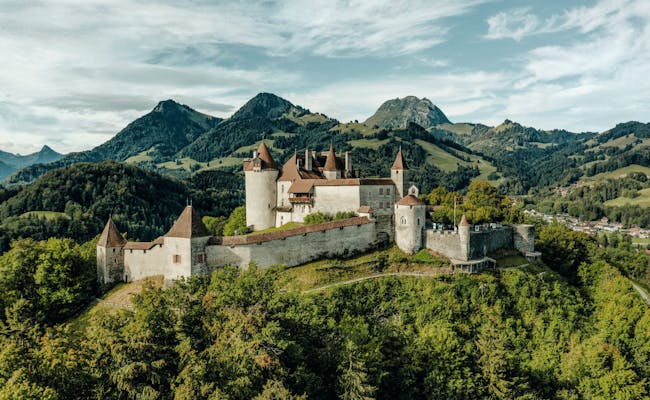

Leave Montreux after breakfast and head to Lausanne. This picturesque old town is built on three hills and surrounded by numerous vineyards. You should definitely find enough to keep you busy for a few hours.
In case you would have liked to visit the Lavaux vineyards the day before yesterday but ran out of time, today’s another chance to give it a go.
Toward the end of the day, either head back to Zurich or travel on to Geneva. Whichever city it is you’re leaving Switzerland from.

Highlights on this itinerary:
Explore Zürich in the morning at your own pace, rent a free bike with "Züri rollt" or join a city tour. After the tour, grab a take-away lunch and take the train to St. Gallen.
Spend your afternoon wandering around the old town of St. Gallen. With its UNESCO-protected Abbey district, the impressive cathedral, and the stunning Abbey Library, this city has a lot to offer.
Make sure you don't miss the recreational area “Drei Weieren.” You can reach it by taking the Mühleggbahn or by walking up one of the many staircases. Alternatively, you could visit the Peter & Paul wildlife park or quench your cultural thirst in one of the many museums.
The best place to relax is definitely at the “Drei Weieren.” Here, you can go swimming or take a walk through the forest. Plus, you’ll enjoy a fantastic view over the entire city, Lake Constance, and even into Germany.

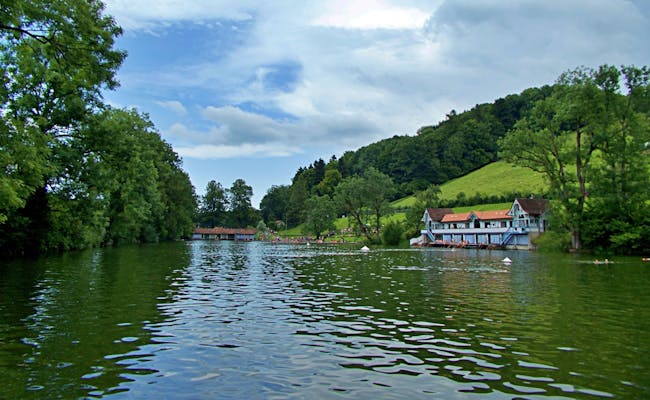
The following two days are fully dedicated to exploring the Alpstein mountain range. Leave whatever luggage you won’t need in St. Gallen and get ready for some serious hiking.
The hiking options are absolutely endless in this mountain range. Whether you’d like to catch a glimpse of the famous Äscher restaurant or go for a swim in the charming Seealpsee, you’ll find your match.
Since you’ve got two days to spare, we’ll run you through one of our favourite hikes in this area. It starts in Brülisau, includes two mountain lakes, some fresh milk and cheese, maybe a night in a stable above the cows and definitely a pair of sore calves.
Firstly, make your way to Brülisau in the Canton of Appenzell Innerrhoden. From here, start your walk to the restaurant Ruhesitz, which you’ll reach halfway up a mountain called Hoher Kasten. From Ruhesitz, follow the signs pointing you toward Lake Sämtisersee. By now, you might be ready for a break. Spend as much time as you like hanging out by or inside this beauty.
From Sämtisersee, keep going until you reach Bollenwees by Lake Fälensee. If you’re looking for comfort, this mountain inn is where you can spend the night. They offer private rooms or dorms with showers as well as a restaurant. The views over the lake are unparalleled and after this long day of hiking, you’ll probably be more than happy to just stretch your legs and take in the stunning backdrop.
However, if you’re up for a bit of an adventure, keep going. Follow Lake Fälensee to the end and you’ll bump into Fälenalp, a little Alp where a farmer’s family takes their cows, goats and pigs to spend the summer. They offer beds in a big dorm in a stable above the cows and cook a rustic farmers’ dinner for you.
Everyone looking for a place to forget about this busy world out there will love coming here. In case you decide to stay at Bollenwees, we still recommend you walk to Fälenalp to see this magical place and to try their fresh goat cheese. Either today after settling in at Bollenwees or tomorrow before heading back to St. Gallen.
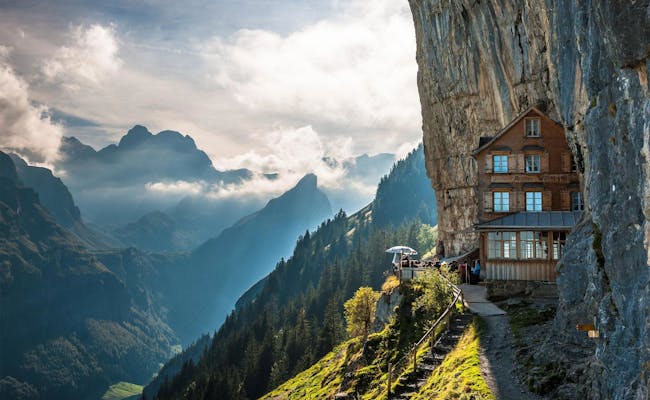

Wherever you spent last night, we hope you slept well in this fresh mountain air. You can head straight back to St. Gallen after breakfast, but it’s really up to you how you plan out your day. You haven’t exhausted your hiking options by far, so keep going for as long as you please.
One option is to climb to Bogartenmannli and terminate your hike in Wasserauen after passing Seealpsee. This should put you on the train to St. Gallen some time in the afternoon. Or you can just walk back to Brülisau via Sämtisersee and Brüeltobel. The world is your oyster here.
On your way back to St. Gallen, you might like a quick stopover in Appenzell, the charming capital of the Canton of Appenzell Innerrhoden. In case you’re feeling brave, visit the little cheese store at Hauptgasse 13. But be warned, those smelly cheese fumes will knock your socks off the second you enter the store.
There’s no way your feet will be able to compete with that odour. Not even after two full days of being trapped inside your trekking boots... 🙂
Oh, and don’t miss out on a piece of Appenzeller Biber, an iconic local sweet treat made of gingerbread and a honey almond filling. And before you ask: Nope. This Biber doesn’t have any famous Canadian relatives...
Also, if you’re a beer-lover, make sure to stop by the Locher brewery. They brew the popular Quöllfrisch beer that is consumed all across Switzerland.
In the evening, head back to St. Gallen and enjoy sleeping like a baby tonight. Spending a day or two in the mountains has a tendency to leave you peacefully exhausted.
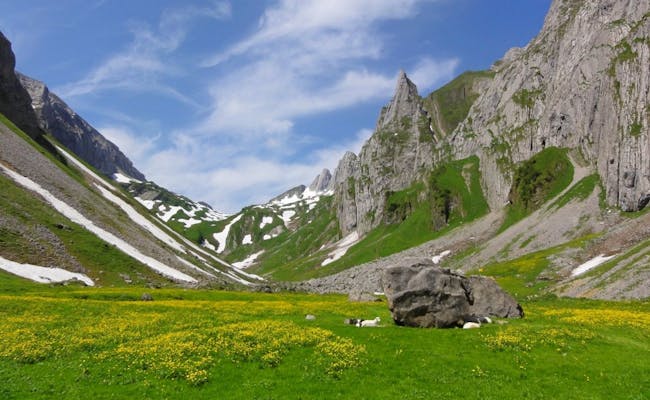
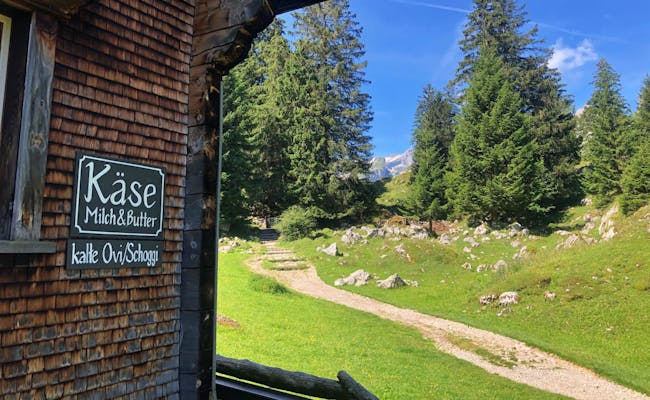
It’s time to take it down a notch today. After two intense and possibly exhausting days in the Alpstein, take a relaxing trip to Lake Constance.
This lake is 63 kilometres (39 miles) long, up to 14 kilometres (8.7 miles) wide and shares its shores with Germany, Austria and Switzerland. It’s one of Europe’s biggest lakes and is very easy to reach from St. Gallen by train.
This tri-national area offers a considerable amount of sights and activities for you to discover. For one, there’s the picturesque town of Constance in Germany that’s just within walking distance from Kreuzlingen. Most Swiss go there for its cheap shopping, but Constance has more to offer than low-priced stores.
With its charming old town, a wide array of cafés, restaurants, ice cream places and peaceful spots to hang out by the lake, Constance certainly manages to attract visitors throughout the warmer months.
If you’re into fish and other creatures that live and dwell under water, the Sea Life is always a potential bad weather option.
Of course, you don’t need to leave the country to enjoy Lake Constance to its fullest. Visit one of the many beaches, go for a swim, catch a passenger ship, rent a stand up paddleboard, grab a bike and follow the trails or go for a walk along the lakeshore.
The Canton of Thurgau, which makes up most of the Swiss part along Lake Constance, is famous for its apple trees. One of the walks we recommend in this area is the Altnauer Apple Trail. It’s particularly idyllic when the trees bloom in April and May or then again during harvest time in autumn. The trail is basically divided into three separate trails, which all contain informative signs addressing different topics. Combine all three trails and you’ll know everything there is to know about apples. Oh, and options to buy and taste a selection of apple products are plentiful along the way, too.
Additional places of interest by Lake Constance are the towns of Romanshorn, Rorschach and Kreuzlingen. Once you’re done exploring the area, catch the train back to St. Gallen for one last night.
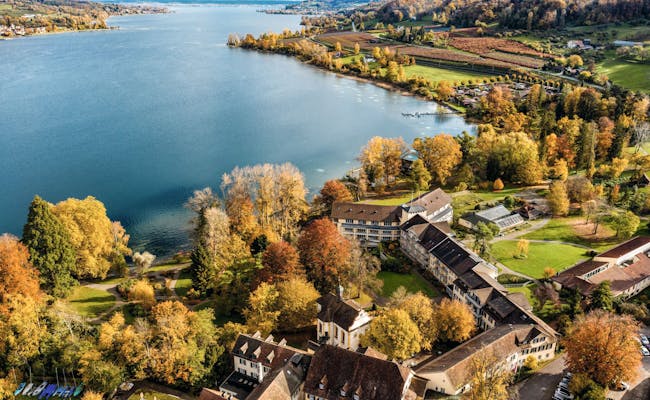
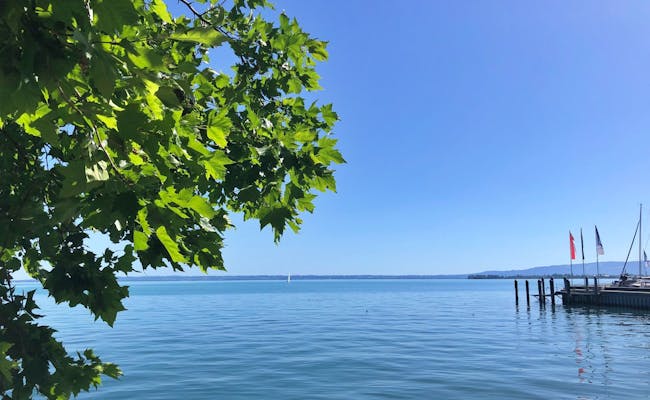
You’ve probably seen enough of St. Gallen by now so grab your bags in the morning and catch the Voralpen-Express to Lucerne. Out of the many scenic train rides in Switzerland, this is one of the less touristy ones. It doesn’t come with fancy panorama windows and there’s no friendly voice pointing out what viaduct you just crossed.
But that doesn’t make it any less worth riding.
We recommend breaking up your journey halfway in and getting off in Rapperswil, a real hidden gem of a city. Head up to the castle, spend some time with the deer in the castle’s garden, go for a swim in Lake Zurich and walk along the idyllic esplanade. An excellent spot to relax is the lawn behind OST, the technical college of Rapperswil. You can’t miss it when you head toward the lake after leaving the train station.
If you’re looking for an easy walk, follow the wooden footbridge and the connecting walkway across the lake to Pfäffikon. In doing so, you’ll be completing three kilometres (1.8 miles) of the Camino de Santiago trail, a pilgrim route leading from different places across Europe to Santiago de Compostela in Spain.
Once you’re ready to move on, catch the next train to Lucerne and transfer to the train to Engelberg. This versatile mountain village is situated about 25 kilometres (15 miles) south of Lake Lucerne and lies at an altitude of 1.013 metres (3.323 feet) above sea level. At 3.239 metres (10.626 feet), towering over the other peaks surrounding Engelberg, is mighty Mount Titlis.
Since you’ll arrive in Engelberg mid- or late afternoon, there won’t be enough time to head up there right away. So let’s leave that until tomorrow to make sure you don’t feel rushed. Instead, what you can do this afternoon is check out the centre of Engelberg. Or more specifically, the Benedictine monastery.
This ancient monastery, which was founded in 1120, is still inhabited by 30-odd monks. You can either visit the premises on your own or join a guided tour.
Like many places in the Swiss Alps, Engelberg focuses on outdoor activities. Undoubtedly, the most popular destination in this area is Titlis. You can reach the summit from Engelberg by taking two gondolas. One of them is the Rotair, the world’s first rotating cable car that spins 360°. At the summit, you'll be greeted by stunning panoramic views. There's also a spectacular glacier cave and the thrilling Titlis Cliff Walk by Tissot.
The hiking options in Engelberg are virtually endless and cater to all tastes. A recommended hike is the "Kitzelpfad" in Brunni. Here, you can take off your shoes and walk over various types of terrain. While your feet are tickled by nature, you can enjoy a perfect view of Titlis.
And what’s a proper hike without one or two mountain lakes…?
A more challenging hike called the Four Lakes Hike takes you past – you might have guessed it – four mountain lakes. Since this hike lasts almost five hours, we only recommend it if you’re feeling fit enough.
If you’d like a less strenuous day, you can opt for the wheelchair-accessible path around Engelberg. This two-hour hike starts at the monastery in the center of Engelberg and leads to the picturesque river Aa and back. Even if you don’t go up to the peaks, you can still enjoy a nice view of the mountains.
In winter, Engelberg transforms into a true paradise for snow lovers. Whether you enjoy skiing, snowboarding, snowshoeing, hiking, cross-country skiing, ice skating, or sledding, you’ll be able to meet your expectations. Engelberg is particularly popular among freeriders.
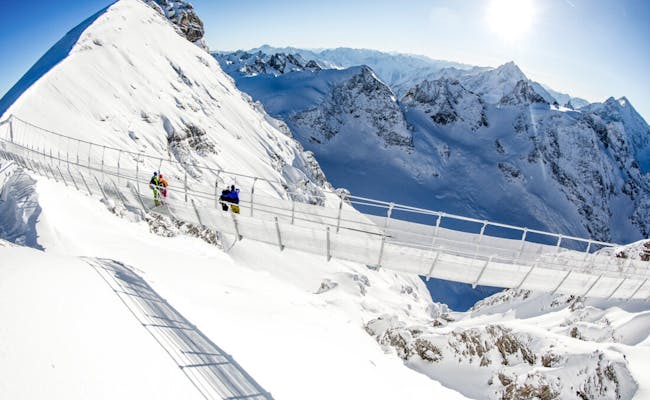
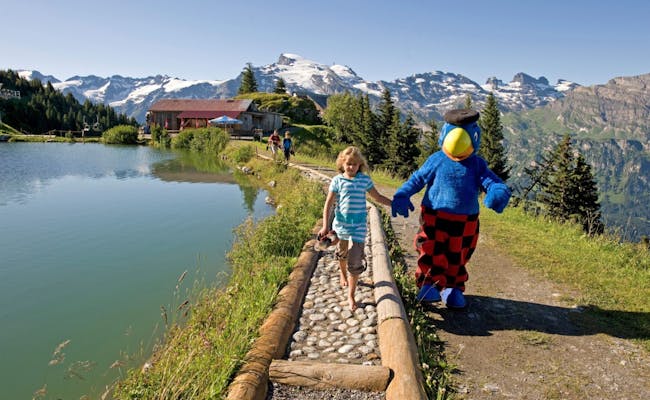
Today you can catch up on what you didn’t manage to do yesterday in Engelberg. When you’re ready to continue your journey, hop on the train to Lucerne. The ride takes less than an hour and is very straightforward.
Once you arrive, you can drop off your luggage at the station and spend a few hours exploring this charming city. Take a stroll across the Chapel Bridge, wander through the old town, relax by the lake, or visit the Glacier Garden with its famous Lion Monument.
You can spend the whole day here, so take your time. For a detailed list of ideas on what to do in Lucerne, check back to Day 2 in Itinerary No. 2.
Fortunately, you don’t have to rush today and can enjoy Lucerne until the afternoon or even the evening. You have plenty of time to do everything you didn’t get to yesterday.
A popular day trip from Lucerne is a detour to Mount Rigi. To get there, you can either store your luggage at your accommodation in Lucerne or at the train station and take the train to Arth Goldau. From there, the Rigi railway - the first mountain railway in Europe - will take you to the Rigi Kulm mountain station in a 45-minute ride.
If Mount Rigi isn’t shrouded in clouds, you’ll have a spectacular view of the Alps, Lake Lucerne, and other nearby lakes. Just follow the signs to the viewpoint after you get off at Rigi Kulm.
Once you’ve taken enough photos, you can either take a break at the restaurant, ride the train down to Vitznau, or go for a hike. With over 120 kilometers of hiking trails, you have plenty of choices here.
When you arrive in Vitznau, the passenger ship to Lucerne will be waiting for you. Keep your camera ready, because the ride is scenically impressive and offers even more breathtaking views.
Back in Lucerne, pick up your luggage and head back to Zurich.

Highlights on this itinerary:
Explore Zürich on your own in the morning, rent a free bike with ‘Züri rollt’ or join a city tour. After the tour, you can grab some takeaway lunch to enjoy on the train to Chur.
To get a better view of Lake Zürich and Lake Walensee on your way to Chur, we recommend getting a seat on the left side of the train.
Spend an hour or two wandering around Chur, then get ready for the fresh mountain air that awaits you in St. Moritz. To travel to St. Moritz, you can hop on the direct RhB train in Chur. Keep your camera ready because you’ll be treated to panoramic views from start to finish. The Landwasser Viaduct and the winding Albulaline are two highlights of this journey.
Spend the rest of the day in St. Moritz. If you feel unusually sleepy this evening, it’s due to the altitude of 1,822 m above sea level. It usually takes a day or two to adjust to the thinner air.

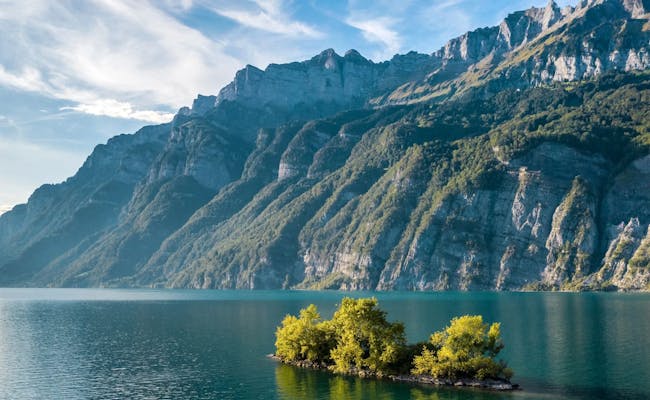
Just like in Zermatt and Saas-Fee, St. Moritz is all about outdoor adventures, whether it’s summer or winter. Whether you want to go cycling, hiking, stand-up paddling, swimming, windsurfing, skiing, snowboarding, snowshoeing, cross-country skiing, or just taking a stroll, you’ll find everything your heart desires here.
Just a short drive from St. Moritz is Lake Silvaplana, a stunning spot to enjoy some of these activities.
Another place worth visiting is Ospizio Bernina. At 2,253 m above sea level, this little station is the highest point of the Bernina Express scenic train. Trains depart from St. Moritz every hour, taking you past lakes, glaciers, and towering mountain peaks.
When it comes to food, we recommend two must-try dishes in the Engadin. First, you can’t miss a bowl of Bündner barley soup. This soup with barley, vegetables, and meat is a typical Engadine dish that will warm you up on a chilly day like nothing else.
Secondly, treat yourself to a piece of Engadine nut cake. This hearty, delicious pastry will bring back all those calories you were trying to burn off, but it’s absolutely worth it.
Back in St. Moritz, you can spend the rest of your day wandering through the town. St. Moritz isn’t quite as charming and mystical as other villages in the area like Samedan or La Punt, but it’s great for window shopping. And if you’re lucky, you might even spot a celebrity or two.


Today, you’ll ride the Glacier Express from St. Moritz to Zermatt. This journey on the "slowest express train in the world" is a unique experience. Throughout the trip, you’ll be accompanied by the best views the Alps have to offer.
The train departs St. Moritz twice daily in the morning. The timetable changes throughout the year, and there are some trains that do not cover the entire route between St. Moritz and Zermatt. To find your connection, check the current timetable in advance.
There’s a reason the Glacier Express is one of the most popular train routes in Switzerland. What makes this journey unforgettable are the fantastic views that follow you the whole way. The train takes you over 291 bridges, through 91 tunnels, across two cantons, and through two language regions.
The trip takes just over 8 hours, and depending on when you leave St. Moritz, you’ll arrive in Zermatt between 5:00 PM and 6:00 PM. Once you arrive, you can spend the rest of the day wandering through the small mountain town and taking in the sight of the majestic Matterhorn.
Assuming it’s not shrouded in clouds.
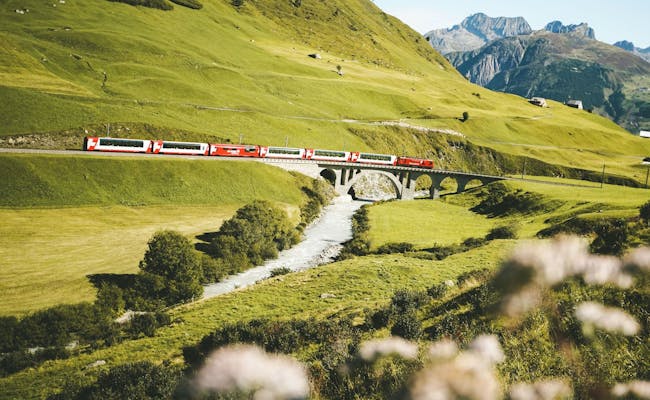

Zermatt is all about the mountains and nature. If you came to Switzerland for the spectacular views, you'll absolutely love it here.
There are numerous hikes and walks of all difficulty levels that will take you to places you didn't even know existed. One popular option is the Zermatt 5-Lake Trail, which takes about 2.5 hours to complete. It passes five crystal-clear mountain lakes and offers breathtaking views of the Matterhorn along the way.
If you're looking for another adventure that might make your head spin a bit, consider crossing the world's longest pedestrian suspension bridge in Randa. It's a staggering 494 meters long and stretches across the valley. The round trip to the bridge starts and ends in Randa, just 15 minutes by train from Zermatt.
If you prefer to skip the hike altogether and want an easier way to see the mountains, we recommend taking a ride up to Gornergrat. After an incredibly steep train ride, you'll find yourself at an altitude of 3,089 meters above sea level, right in front of the Gorner Glacier and the Matterhorn.

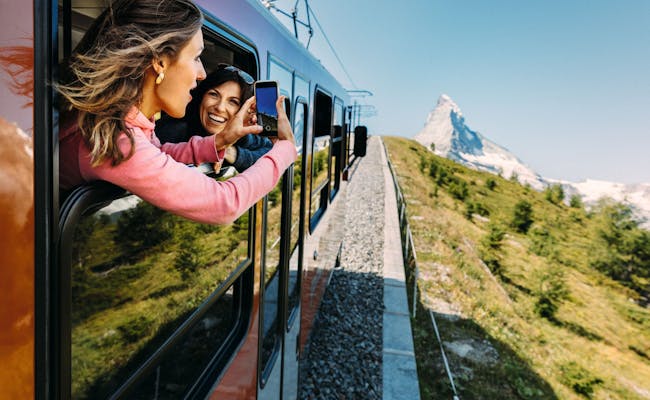
Get ready for more action in the mountains today. Once you're done exploring Zermatt, take the train and then the bus to Saas-Fee.
Saas-Fee, also known as the "Pearl of the Alps," is surrounded by some of the highest mountains in Switzerland. When you arrive in this charming alpine village, you'll find yourself surrounded by 13 peaks, all over 4,000 meters above sea level. If you're visiting in summer, you'll have nearly endless hiking opportunities. Over 350 kilometers of hiking trails will lead you to places you never even knew existed.
And speaking of hikes, don't forget to keep an eye out for marmots. Your chances of spotting a few of these adorable alpine creatures are quite good here.
But Saas-Fee isn't just fascinating during the hiking season. If you're here in winter, you can go all out skiing or snowboarding. And because Saas-Fee is situated at such a high altitude, you’ll even ski on a glacier at times. That's not something you experience every day.
There are over 150 km of groomed runs available to you for as long as you want. And while other ski resorts have struggled with a lack of snow in recent years due to climate change, Saas-Fee's high elevation ensures great snow reliability.
Enjoy the view of the mountains, the snow, the hikes, the marmots, and the fresh air.
In Saas-Fee gibt es definitiv mehr zu erleben, als du an einem Tag schaffen kannst. Bleib also so lange hier, wie du möchtest, bevor du nach Montreux aufbrichst. Wenn du in Montreux ankommst, kannst du zur Promenade gehen und die Statue von Freddie Mercury vor der Markthalle besuchen. Wenn du das berühmte Schloss Chillon sehen willst, kannst du der Promenade bis zum Schloss folgen oder in den Bus einsteigen. Auch Passagierschiffe fahren regelmäßig zwischen Montreux und dem Schloss Chillon.
Alternativ kannst du die berühmten Lavaux-Weinberge besuchen, die zum UNESCO-Weltkulturerbe gehören. Nimm dazu den Zug in Richtung Lausanne. Um die herrliche Aussicht zu genießen, steig in Cully oder Epesses aus und folge dem ausgeschilderten Wanderweg durch die Weinreben.
Uns ist bewusst, dass das heute ein ziemlich volles Programm ist. Aber jetzt, wo du deine Optionen kennst, bist du flexibel und kannst deinen Tag nach deinen Wünschen gestalten.
Und vielleicht auch nach dem Wetter… Außerdem hast du morgen den ganzen Tag in Montreux. Nimm dir also Zeit.
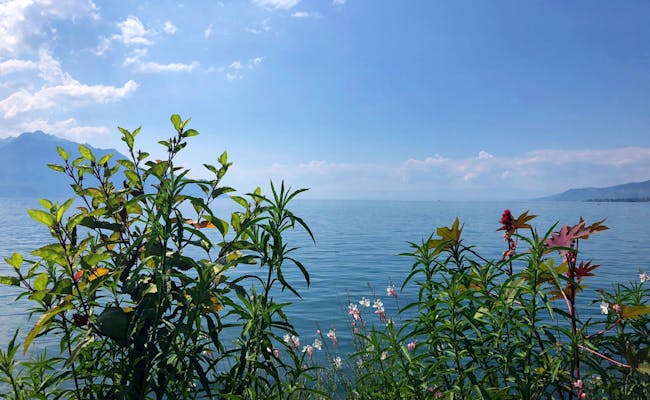
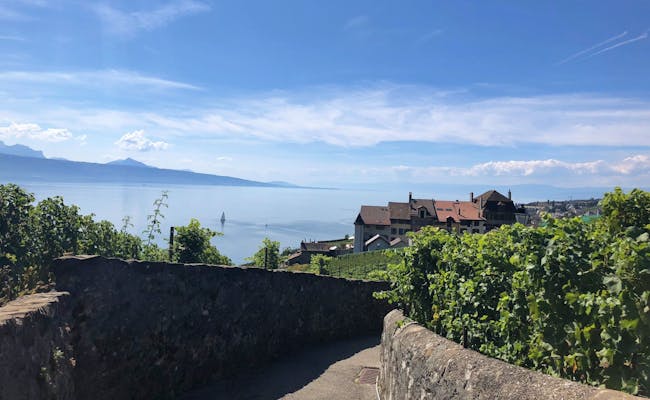
Do you hear the call of Lake Geneva? Then follow that call today and check off what’s left on yesterday’s list. For example, Château de Chillon, the promenade in Montreux, and of course, the stunning vineyards of Lavaux.
Additionally, the city of Lausanne is just a short distance from Montreux. The train ride takes less than half an hour, and we recommend visiting Lausanne if you have the time. The picturesque old town of Lausanne is built on three hills and surrounded by numerous vineyards. It is home to the International Olympic Committee and Switzerland's only metro system.
Since you’ll be spending the day right by Switzerland’s largest lake, you have the opportunity to take a boat trip. For a few hours on Lake Geneva, you can relax and enjoy a break from rushing around.
Another option for today is visiting Gruyères and Broc, where you can taste plenty of cheese and chocolate. If you're interested in that, check out Day 7 in Route No. 5 again. Just make sure you don't set off on a full stomach.
It’s time to say goodbye to the beautiful Lake Geneva region and head to Bern. Before you wrap up your journey tonight in Zürich (or Geneva), you have a whole day to explore the capital of Switzerland.
Stash your luggage for a few hours in a locker at the Bern train station. Join a guided tour or discover Bern on your own. Stroll through the old town, visit the Bear Park, check out the Federal Palace, and walk back to the Rose Garden to enjoy the view.
You can also head up to the Gurten, Bern’s local mountain, watch the animals at the Dählhölzli Zoo, or visit the Botanical Garden. Take the lift at the train station and enjoy the view from the Grosser Schanze, or go for a swim in the Aare or at Weyermannshaus.
At the end of the day, catch a train to Zürich or Geneva, depending on which city you’re leaving Switzerland from.
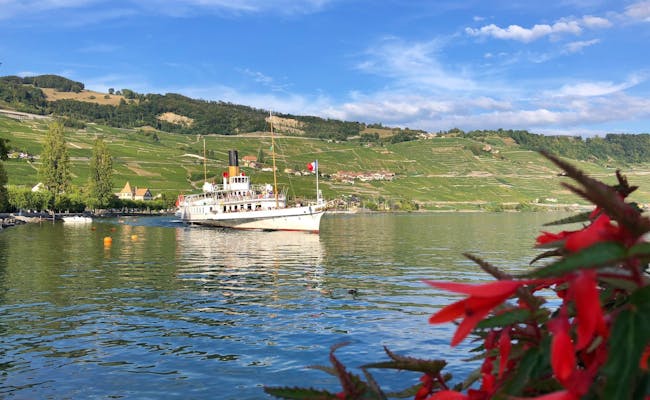
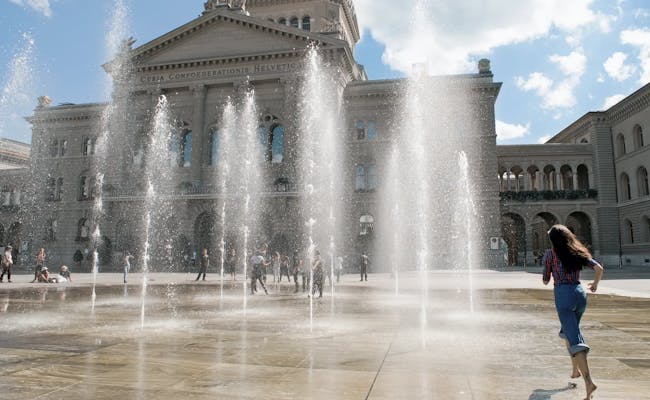

Highlights on this itinerary:
In the morning, you can explore Geneva on your own, rent a free bike from "Genève Roule" or join a city tour. After the tour, grab a take-away lunch and take the train to Nyon.
This medieval town on the shores of Lake Geneva is surrounded by charming vineyards. Follow the path through the vines to Nyon Castle and enjoy the view. After your lunch break, take the train to Lausanne. Check into your accommodation and use your free Lausanne Transport Card.
The picturesque old town of Lausanne is built on three hills and surrounded by numerous vineyards. It houses the International Olympic Committee and the only metro in Switzerland.
If you want to hear something interesting, head to the cathedral between 10:00 PM and 2:00 AM to watch the tower. Since 1405, night watchmen have announced the current time from up there in the middle of the night.
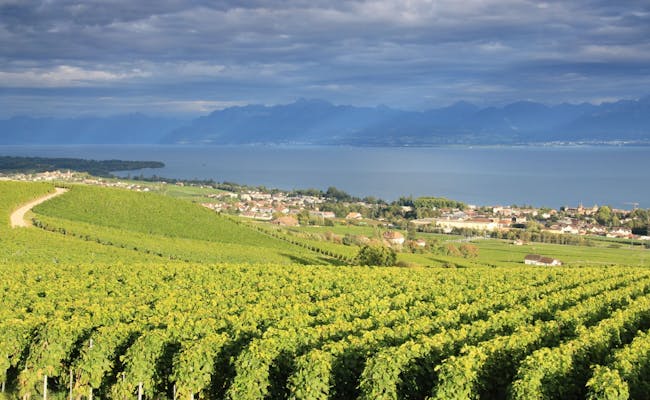

After breakfast, buy enough food for the day and head straight to Le Pont, a village in the Valleé de Joux. The train ride from Lausanne to the valley takes roughly an hour. Vallée de Joux is part of the Jura mountains and offers countless hiking options. In the centre of the valley, you’ll find a peaceful lake called Lac de Joux.
By far the most popular spot in the area is the distinctive mountain of Dent de Vaulion. Hiking the circular path from Le Pont takes around three hours. The views from Dent de Vaulion across the Vallée de Joux, all the way to Lake Geneva and way into France, make this place extra special.
Since you’ve got all day up here, spend as much time in the area as you like. Hang out by Lac de Joux, walk the path around the lake or do whatever else your heart desires. Whenever you feel like it, catch the train back to Lausanne and spend the rest of the day exploring the city.
If you’re in for a bit of a challenge, we recommend hiking to Creux du Van instead. This natural, one-kilometre wide amphitheatre got its shape from constant erosion by water and ice. Marmots, mountain goats, deer and various birds inhabit this area.
The starting point of the hike is in Noiraigue, a village that takes roughly an hour and a half to reach from Lausanne. Hiking to Creux du Van is pretty tough and will take up to five hours. Spend as much time as you like at the amphitheatre before heading back to Noiraigue and Lausanne.
Of course, Switzerland gets its fair share of bad weather and we don’t suggest you do this hike if it’s raining. The rocks can get slippery and dangerous when they’re wet and we don’t want you to get hurt!
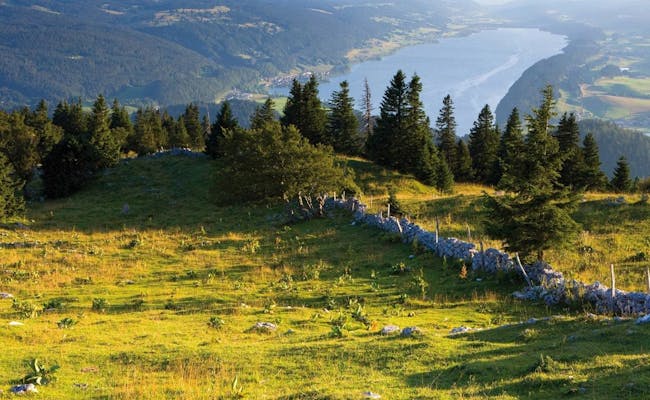
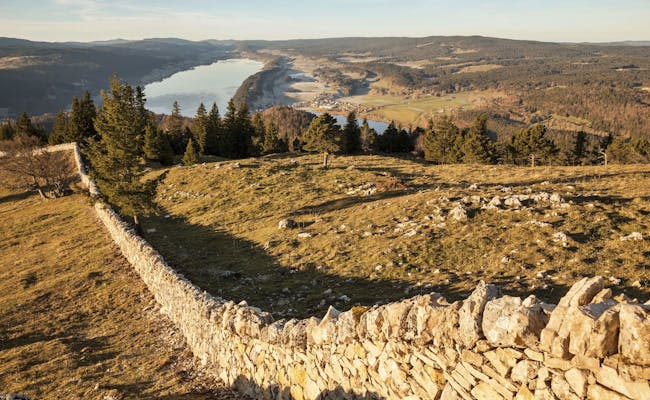
In the morning, you've got some time to explore Lausanne once more. Before heading to Bern, take some time to visit one of our favorite spots in Switzerland. Just a short train ride east of Lausanne, you'll find the famous Lavaux vineyards, a UNESCO World Heritage site. To enjoy the stunning views, hop off at Cully or Epesses and follow the marked hiking trail through the vines.
After your little excursion, you can return to Lausanne to pick up your luggage. From there, a direct train will take you to Bern in just over an hour. The rest of the day is yours to discover the streets of our capital. Stroll through the old town, visit the Bear Park, or check out the Federal Palace.
You can also visit the Gurten—Bern's local mountain—watch the animals at the Dählhölzli Zoo, or explore the Botanical Garden. Take the lift at the train station and enjoy the view from the Grosse Schanze or go for a swim in the Aare or Weyermannshaus. In the evening, we recommend heading into the Rose Garden for a fantastic view of Bern at night.
After breakfast, take the train to the charming little town of Murten. The trip only takes half an hour, and you won’t even need to change trains. Murten is tiny, and you won’t need long to explore the town. Stroll through the historic city center and stretch your legs by the lake.
The area around Murten is perfect for cycling, hiking, swimming, or just enjoying the lake.
By the way, you can find the longest freshwater sandy beach in Europe at Lake Murten in Salavaux. This might not impress someone who grew up by the sea, but for a landlocked country like Switzerland, it’s quite remarkable.
Once you’ve seen enough of Murten, hop on the next train to Neuchâtel. Spend the afternoon exploring this beautiful city with its lake views and steep streets. If you're looking for more fantastic views, you should head up to Chaumont, the local mountain of Neuchâtel.
The funicular takes you from Le Coudre to the summit. From there, you can hike down to Cressier via Trois Cheminées. There’s a bus that will take you back to Neuchâtel from Cressier. Alternatively, you can take a walk in Chaumont and ride the funicular back down.
At the end of the day, you can head back to Bern and spend another night in the Swiss capital.


Bern is close to a variety of interesting day trip destinations. For example, Thun and Interlaken are two beautiful towns offering spectacular views of lakes and mountains.
If you're into mountain lakes, you have two great options from Bern. Oeschinensee and Blausee are easily reachable from Bern and definitely worth a visit. The crystal-clear waters of both lakes will leave you mesmerized.
Just half an hour west of Bern lies the medieval town of Fribourg. If you decide to head there, follow the signs for the city tour, which will take you through the impressive old town. The signs guide you through steep alleys, over old wooden bridges, down to the Saane river, and past the city's funicular railway. For an even better view of your surroundings, you should climb the 365 steps up to the cathedral's tower. The Saane river at the foot of the town is a great spot to stretch your legs and grab a snack.
You could even go further and visit Gruyères and Broc to have some typical Swiss cheese and chocolate. Whatever you decide to do today, make sure to return to Bern for your last night when you're ready.

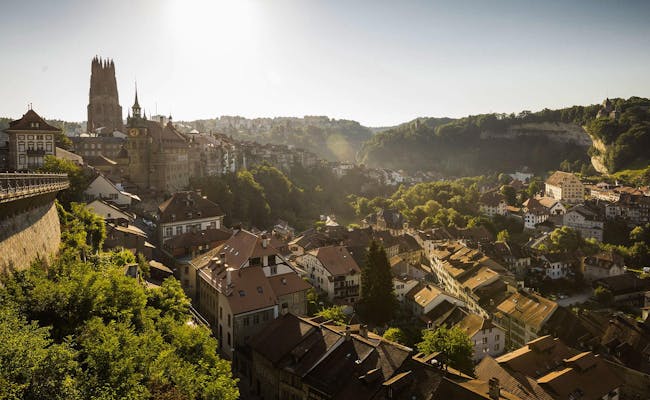
By now, you're probably ready to leave Bern. So pack your bags in the morning and take the train to Gstaad. Today, you'll be treated to a lot of scenic delights. From Spiez to Zweisimmen and then to Gstaad, you'll travel on the Golden Pass Line. This popular panoramic train route links the center of Switzerland in Lucerne with the shores of Lake Geneva in Montreux.
After you change trains for the second time in Zweisimmen, the ascent through the Bernese Oberland to Gstaad begins. This region is a dream come true for mountain lovers and encapsulates nearly everything that Switzerland stands for. You'll find lakes, mountains, lush meadows with grazing cows, glaciers, plenty of hiking trails, breathtaking landscapes, and charming little villages in abundance here.
That’s why you’ll spend two nights here. Get off in Gstaad, check into your accommodation, and set off to explore the Alps. Your hiking options are endless. Find a trail that matches your fitness level and enjoy the view. By the way, Lake Lauenensee is just one of the popular spots you can visit up here.
As you stroll through Gstaad in the evening, keep your eyes peeled for celebrities. This place is a hotspot for the rich and famous, much like St. Moritz.
If there was ever a day to have your camera on hand, it’s today. The mountain panorama waiting for you at your destination is truly breathtaking. Make sure your battery is fully charged.
The mountain peak we’re talking about is the impressive Glacier 3000, easily accessible from Gstaad. After a 35-minute bus ride to Col-du-Pillon, you’ll find yourself at the foot of some truly stunning mountains.
Hop on the cable car and enjoy the ride. Once you reach the top, you’ll be rewarded with a 360-degree view. On a clear day, you can spot some of the most famous peaks of the Alps, including the Matterhorn, the Mont-Blanc massif, and the beloved mountain trio of Eiger, Mönch, and Jungfrau.
If you’re feeling adventurous, take a walk across the Peak Walk to Scex Rouge. The Peak Walk is the world’s first suspension bridge connecting two peaks. Crossing this bridge is an experience you’re not likely to forget anytime soon.
Depending on when you return to Gstaad, you might have a few hours to wander around town or go for another hike before spending another night in the Bernese Alps.

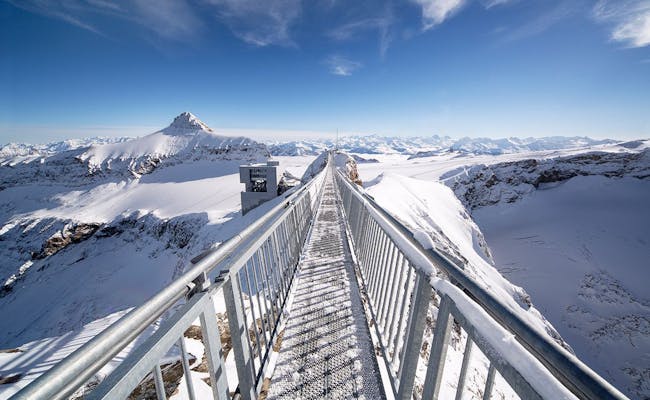
Time to say goodbye to this beautiful region. Catch the Golden Pass train after breakfast and continue your scenic journey to Montreux, where you have a couple of hours before travelling back to Geneva. Head to the Promenade of Montreux and check out the Freddie Mercury statue just outside the market hall.
In case you’re interested in castles, don’t miss out on visiting the famous Chillon Castle. To get there, either follow the Promenade by foot, catch a bus or take one of the regularly departing passenger ships.
Even if you’re not keen on going into the castle, we still recommend heading out there and spending some time by the lake. It’s a great place to hang out and take a bunch of jealousy-inducing pictures.
Head back to Geneva toward the end of the day and spend the evening in Switzerland’s second largest city.
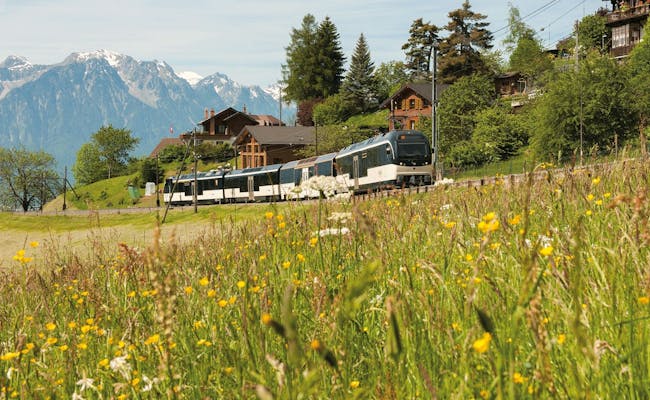

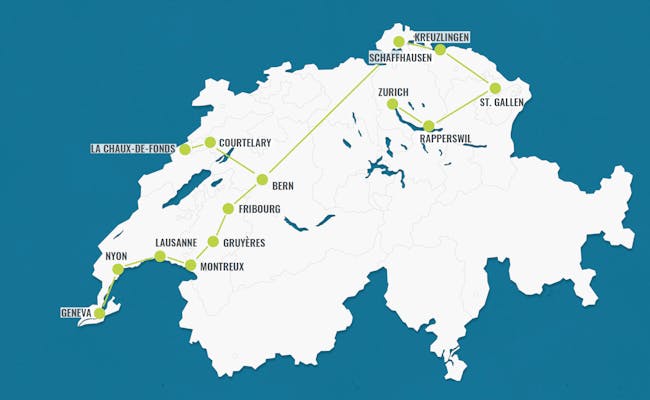
Highlights on this itinerary:
In the morning, you can explore Geneva at your own pace, rent a free bike from "Genève Roule," or join a city tour. After the tour, grab a takeaway lunch and take the train to Nyon.
This medieval town on the shores of Lake Geneva is surrounded by charming vineyards. Follow the path through the vines to Nyon Castle and enjoy the view. After your lunch break, take the train to Lausanne. Check into your accommodation and make use of your free Lausanne Transport Card.
The picturesque old town of Lausanne is built on three hills and surrounded by numerous vineyards. It is home to the International Olympic Committee and the only metro in Switzerland.
If you want to hear something interesting, head to the cathedral between 10:00 PM and 2:00 AM and watch the tower. Since 1405, night watchmen have announced the current time from up there in the middle of the night.
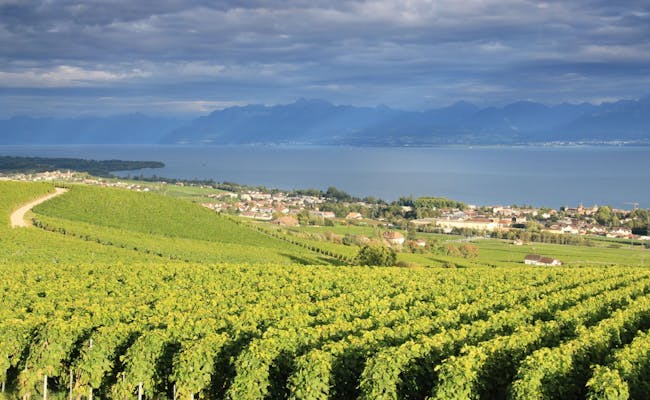
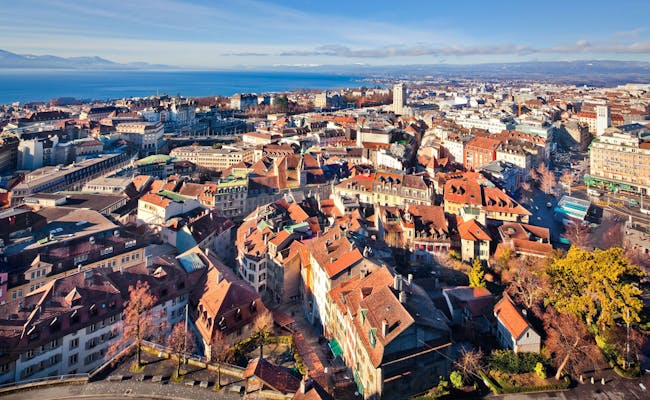
After breakfast, you’ll take the train to Montreux, where you'll have a few hours to explore the city. Stroll along the promenade or visit Chillon Castle. Around lunchtime, you’ll head to the very touristy but beautiful village of Gruyères. The journey between Montreux and Montbovon is served by both regular regional trains and the famous Golden Pass Line.
Since Gruyères is very popular with tourists, it can get a bit crowded at times. But there’s a reason why it’s a popular spot, and in this case, the reason is a medieval village. And cheese.
A whole lot of cheese.
The Gruyères cheese factory is located right behind the train station. Here, you can watch the traditional Gruyère cheese being made. Tasting samples are, of course, included. Once you’re done snacking, you can either take the bus or follow the path until you reach the center of Gruyères. This walk will take you about 20 minutes.
The main attraction in Gruyères is probably the castle, which is open to the public and has an admission fee of 12 CHF. However, the hidden cobblestone streets and countless souvenir shops will likely tempt you to stay longer than you anticipated.
After exploring Gruyères and maybe picking up a souvenir or two, you can head to Broc and visit La Maison Cailler. In this visitor center, you’ll learn everything you need to know about Switzerland's oldest chocolate brand. At the end of the tour, there’s a buffet where you can taste an abundance of chocolate. You can use the train ride back to Lausanne to digest your cheese and chocolate overload and look forward to the evening by Lake Geneva.
Spend the morning in Lausanne or visit the beautiful vineyards in Lavaux. When you're ready, hop on the train to Fribourg.
In Fribourg, follow the signs for the city tour that guide you through the impressive old town. The signs lead you through steep alleys, over ancient wooden bridges, down to the Saane River, and past the local funicular. For an even better view of your surroundings, make sure to climb the 365 steps to the tower of the cathedral. The Saane River at the foot of the city is a great spot to stretch your legs and grab a snack.
The ride from Fribourg to Bern takes less than half an hour. Spend the rest of the evening strolling through the UNESCO-protected old town of Bern. For a beautiful view of Bern at night, we recommend heading up to the Rose Garden.

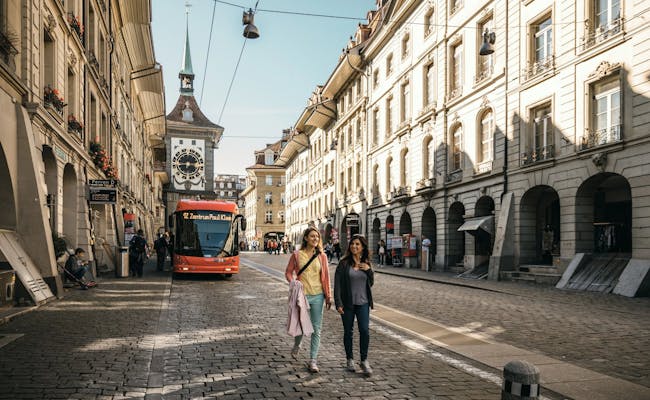
Today, we're heading north to explore the cantons of Neuchâtel and Jura. After breakfast, you’ll head straight to La Chaux-de-Fonds in the canton of Neuchâtel. Le Corbusier, one of the most influential architects of the 20th century, was born here. And since this city was the center of Swiss watchmaking for over 100 years, it’s only fitting that the International Watch Museum is located here.
Another distinctive feature of La Chaux-de-Fonds, aside from watches, is its checkerboard layout. When the city was destroyed by fire in the 19th century and had to be rebuilt from scratch, this unusual pattern for Switzerland came to be, which you'll find today.
On your way back to Bern, make sure to stop by Courtelary, a small town in the canton of Jura. This unassuming village is far from innocent. It’s home to Camille Bloch, the company behind two of Switzerland’s favorite chocolate brands.
Ragusa and Torino.
The visitor center is a fantastic place where you can buy all sorts of their delicious chocolate creations. In the exhibition, you’ll learn all about the highs and lows of the family business since its beginnings in 1926.
There’s also a delightful demo station where two chocolatiers make Ragusa and Torino chocolate right before your eyes. Of course, you can taste the results just a few minutes after they cool down.
Take your time and enjoy the best chocolate before you head back to Bern.
Since you haven’t spent much time in Bern yet, you can stick around this morning before heading off to Schaffhausen. Join a city tour or explore Bern on your own. Stroll through the Old Town, visit the Bear Park, check out the Federal Palace, and take a walk up to the Rose Garden for a beautiful view.
You can also visit Gurten, Bern's local mountain, observe the animals at Dählhölzli Zoo, or explore the Botanical Garden. Take the lift from the station and enjoy the view from the Grosser Schanze, or go for a swim in the Aare or at Weyermannshaus. Hop on a train to Schaffhausen around noon and drop off your luggage at your accommodation before heading out again.
Head straight to Neuhausen next to Schaffhausen. The impressive Rhine Falls attracts visitors from all over the world and is a stunning natural spectacle. Access to the falls from the north shore is free, while admission from Schloss Laufen on the south side costs 5 CHF. Take the time you need to fully take in the beauty of the Rhine Falls. When you’re ready, continue on to Schaffhausen.
Schaffhausen boasts a charming Old Town. Here, you'll find a total of 171 oriels, more than any other city in Switzerland. Once you’ve checked them all off and explored the rest of Schaffhausen, you can head up to Munot and enjoy the view over the city.

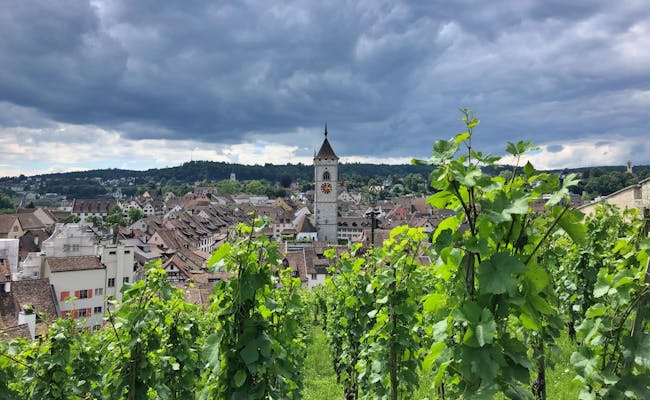
Genieße dein Frühstück in Ruhe und schlendere danach noch ein wenig durch Schaffhausen. Danach kannst du in den Zug nach Stein am Rhein steigen. Diese kleine, malerische Stadt liegt dort, wo der Bodensee endet und der Rhein beginnt.
Klein, aber unglaublich charmant, ist Stein am Rhein der perfekte Ort, um die wunderschön bemalten Häuser zu bewundern. Wenn du genug gesehen hast, kannst du mit dem Schiff den Rhein hinauf und zurück nach Schaffhausen fahren.
Diese Schifffahrt dauert etwa zwei Stunden und gilt als eine der schönsten in der Schweiz. Zurück in Schaffhausen schnappst du dir dein Gepäck und fährst nach Kreuzlingen am Bodensee.
Der Bodensee ist 63 Kilometer lang und bis zu 14 Kilometer breit und teilt seine Ufer mit Deutschland, Österreich und der Schweiz. In diesem trinationalen Gebiet gibt es zahlreiche Sehenswürdigkeiten und Aktivitäten zu entdecken.
Ein Beispiel dafür ist die malerische Stadt Konstanz in Deutschland, die du von Kreuzlingen aus zu Fuß erreichen kannst. Die meisten Schweizer besuchen Konstanz, um günstig einzukaufen. Doch Konstanz hat mehr zu bieten als nur günstige Läden.
Mit seiner charmanten Altstadt, vielen Cafés, Restaurants, Eisdielen und ruhigen Orten am See zieht Konstanz in den wärmeren Monaten viele Besucher an. Wenn du dich für Fische und andere Lebewesen interessierst, die im Wasser leben, ist das Sea Life bei schlechtem Wetter immer eine gute Option.
Natürlich musst du die Schweiz nicht verlassen, um den Bodensee in vollen Zügen zu genießen. Besuche einen der vielen Strände, geh schwimmen, fahre mit dem Passagierschiff, miete ein Stand Up Paddleboard, schnapp dir ein Fahrrad und folge den Radwegen oder mache einen Spaziergang am Seeufer.
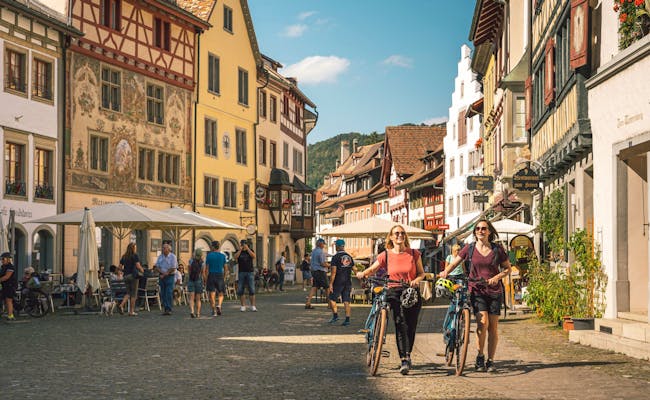

Spend as much time as you want in the Lake Constance region today. The train ride to Rapperswil, your next destination, takes two hours. So you have almost the whole day to explore more of Lake Constance.
The canton of Thurgau, which makes up the largest part of the Swiss region of Lake Constance, is famous for its apple trees. One of the walks we recommend in this area is the Altnauer Apple Path. It's particularly picturesque when the trees bloom in April and May, or during the harvest season in autumn. The path is divided into three separate trails, each equipped with informative signs on various topics. If you combine all three trails, you'll learn everything there is to know about apples. Along the way, there are also numerous opportunities to buy and taste a selection of apple products.
Other interesting spots around Lake Constance include the towns of Romanshorn, Rorschach, and of course Kreuzlingen, where you stayed overnight yesterday.
Board the train to Rapperswil when you're ready. First, head to St. Gallen and transfer to the Voralpen Express. This scenic train connects St. Gallen with Lucerne. Get off halfway in Rapperswil, where you'll be spending the night.
We assume that after your arrival, you won’t have much of the day left. So relax for the rest of the day in this charming town by the shores of Lake Zurich. Walk up to the castle, spend some time with the deer in the castle garden, swim in Lake Zurich, and stroll along the picturesque waterfront promenade.
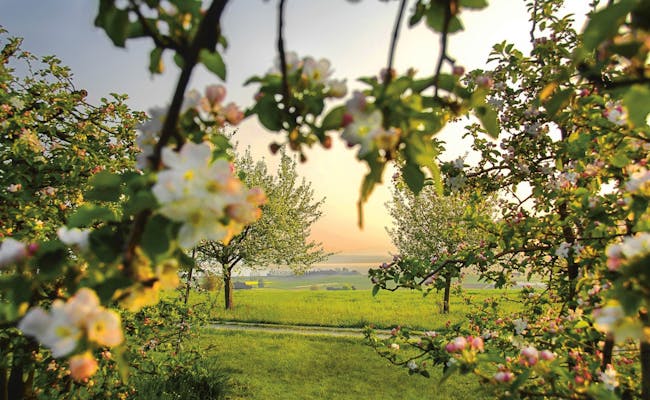

If you want to take a leisurely walk after breakfast, follow the wooden walkway and the connecting path over the lake to Pfäffikon. Along the way, you'll cover three kilometers of the Camino de Santiago, a pilgrimage route that leads from various places in Europe to Santiago de Compostela in Spain. If you'd rather not walk both ways, you can catch a train in Pfäffikon back to Rapperswil.
Once you're back in Rapperswil, grab your luggage and hop on a quick train ride to Zürich. Alternatively, you could take a boat instead. The journey takes about two hours and is a great way to slow down your trip a bit.
You can explore Zürich on your own, borrow a free bike with "Züri rollt", or join a city tour. In the afternoon, you’ll take the train back to Geneva. Depending on your arrival time, you might still have a few hours to enjoy before concluding your journey.
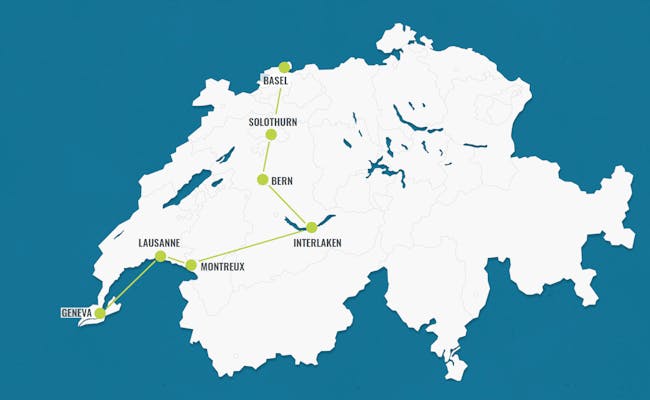
Highlights on this itinerary:
In the morning, you can explore Geneva on your own, rent a free bike from "Genève Roule" or join a city tour. After the tour, grab a takeaway lunch and take the train to Lausanne.
This picturesque old town is built on three hills and surrounded by countless vineyards. It is home to the International Olympic Committee and the only metro in Switzerland. When you're ready, continue on to Montreux, drop off your luggage at your accommodation, and spend the rest of the day exploring Montreux.
If you're interested in castles, don't miss out on visiting the famous Château de Chillon. You can either follow the promenade on foot, take a bus, or hop on one of the regularly running passenger boats to get there.
Even if you’re not in the mood to visit the castle, we recommend taking a detour to spend some time by the lake. It’s a great place to relax and capture some beautiful photos.
Alternatively, you can head in the opposite direction to Lavaux to explore the vineyards. Just a short train ride west of Montreux, you’ll find the famous Lavaux vineyards, a UNESCO World Heritage site. For the best views, it's best to get off at Cully or Epesses and follow the marked hiking trail through the vineyards.

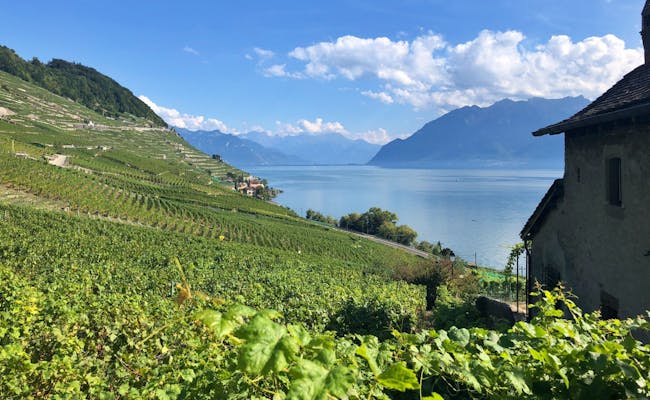
Today, you can look forward to some stunning landscapes. Spend a few hours in and around Montreux in the morning before continuing your journey. You'll leave the Lake Geneva region on the panoramic train and start your ascent into the Alps on the Golden Pass Line. After a few tunnels, you'll arrive in the Bernese Oberland, our favorite part of the whole train trip.
This region is a dream come true for mountain lovers and embodies everything that makes Switzerland special. You'll find lakes, mountains, lush pastures with grazing cows, glaciers, plenty of hiking trails, beautiful landscapes, and charming little villages in abundance here.
Even if you don’t have enough time to get off along the way, the journey through this picturesque area is something you're unlikely to forget anytime soon. After leaving the Bernese Oberland and descending the hills, you'll arrive in Zweisimmen, where you need to change to another train.
The final leg of your journey takes you past Spiez and along Lake Thun before you finally reach Interlaken. Spend the rest of the day exploring this popular town and get ready for the next few days. You'll be spending them in this adrenaline-fueled and scenically beautiful place.

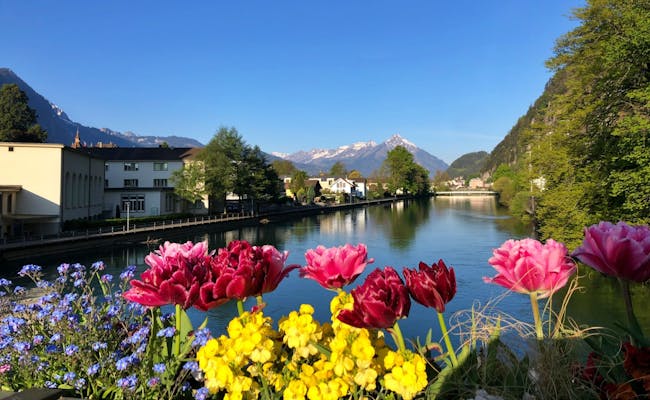
You have more activities to choose from over the next three days than you could imagine. It depends on your budget, but in an adrenaline-filled place like Interlaken, the sky's the limit.
If at all!
Skydiving, paragliding, canyoning, and jet boating are popular activities that will get your adrenaline pumping.
A slightly more relaxed option is a trip on a passenger ship on Lake Thun or Lake Brienz. On both lakes, you'll be treated to incredible views, and you'll wish you never had to leave. If you want to make a stop on one of the boat trips, you can disembark at Giessbach (Lake Brienz), at the St. Beatus Caves, or in Spiez (Lake Thun).
The Jungfrau region around Interlaken is also a fantastic spot for hikers. The number of hiking trails is virtually endless. No matter your fitness level or ambitions, you'll find something that suits your taste.
Of course, the famous Jungfraujoch—also known as the Top of Europe—is the number one destination that everyone wants to see. With the Jungfrau Railway, you’ll travel up to the highest railway station in Europe and find yourself amidst stunning mountain and glacier scenery.
If you're looking for a more budget-friendly alternative to Jungfraujoch, we recommend visiting the Schilthorn, Schynige Platte, Grindelwald First, or Männlichen instead. The rides to these mountains and the view from the summit won’t disappoint.
Other attractions in and around Interlaken include: the Ballenberg Open-Air Museum, the chocolate factory at Funky Chocolate Club, the two mountain lakes Blausee or Oeschinensee, and the Aare Gorge. And let’s not forget the charming towns and villages of Brienz, Spiez, Thun, Lauterbrunnen, or Grindelwald.
We could go on forever. But we think you’d just end up annoyed that you can't spend the whole week here.
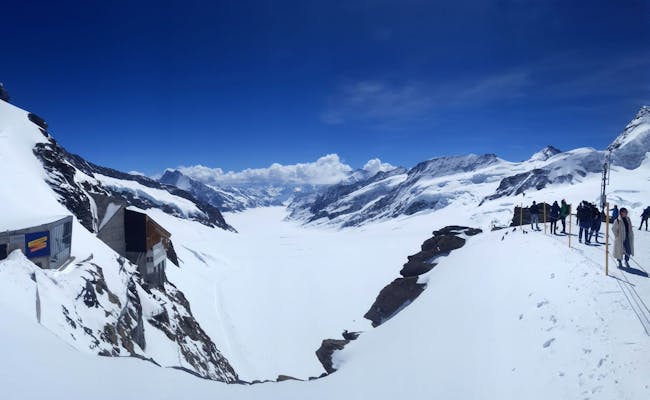

Wir nehmen an, dass du in den letzten drei Tagen genug Zeit hattest, alles in Interlaken zu sehen, was du sehen wolltest. Wenn du bereit bist, reise weiter nach Bern. In dieser charmanten UNESCO-Stadt gibt es viele Aktivitäten, aus denen du wählen kannst.
Nimm an einer Stadtführung teil oder erkunde Bern auf eigene Faust. Schlendere durch die Altstadt, besuche den Bärenpark, schau dir das Bundeshaus an und mach einen Spaziergang zum Rosengarten, um die Aussicht zu genießen.
Außerdem kannst du den Gurten, den Hausberg von Bern, besuchen, die Tiere im Dählhölzli-Tierpark beobachten oder den Botanischen Garten erkunden. Nimm den Lift am Bahnhof und genieße die Aussicht auf der Grossen Schanze oder geh im Aare oder im Weyermannshaus schwimmen.
Du wirst sicherlich genügend Dinge finden, die dich eine Weile beschäftigen. Nimm anschließend den Zug nach Solothurn, der schönste Barockstadt der Schweiz. Heute Abend wirst du wahrscheinlich nicht mehr viel Zeit haben, um die Stadt zu erkunden.
Gönn dir auf jeden Fall ein paar Kugeln Eis in der Vitaminstation, einer der besten Eisdielen überhaupt. Um dich wie ein Einheimischer zu fühlen, kannst du zum Eis essen auf die Steinmauer an der Aare, das "Aaremüürli", setzen.
Serainas Tipp: Meine beiden absoluten Lieblingslokale in Solothurn sind die Pittaria und die Vitaminstation. Jeder, der guten Falafel oder Hummus mag, wird die Pittaria lieben. Und die Vitaminstation hat mit Abstand das beste Eis, das wir je in der Schweiz gegessen haben. Zu unglaublich fairen Preisen für Schweizer Verhältnisse.
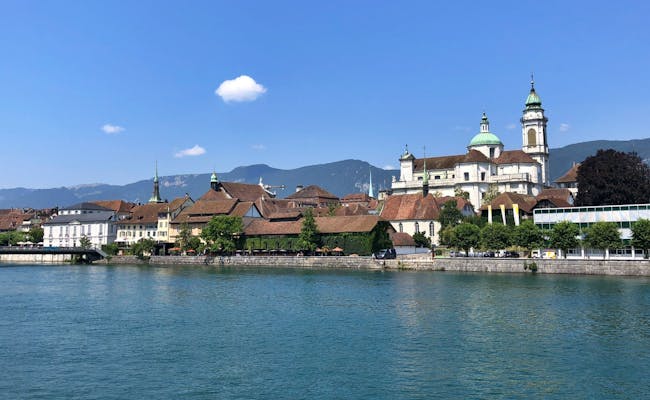
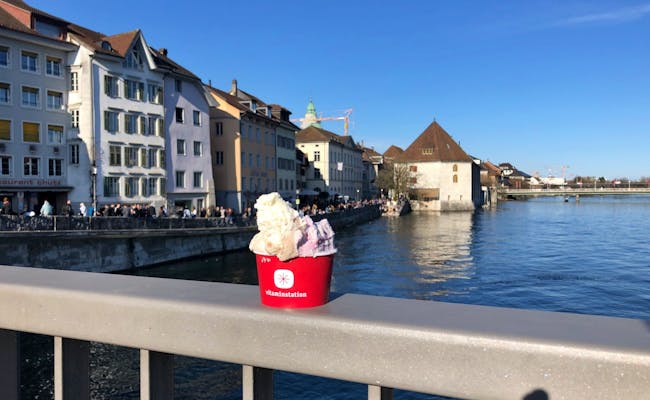
Although Solothurn is by no means a big city, there’s still plenty to see and do in the area. One activity we particularly recommend is going on a hike in the Jura mountains. This high plateau is a wonderful area to visit all year round.
One option to reach the top with its countless walking trails is by cable car from Oberdorf to Weissenstein. Feel free to walk as long and as far as you like before hiking back down or catching the cable car to Oberdorf.
A very popular hike is the round trip from Solothurn via Balmberg and Weissenstein. Catch the Postauto in Solothurn, get off at Balmberg, walk along the crest to Weissenstein and head back down to Oberdorf by cable car. From Oberdorf, the train will take you back to Solothurn.
This is an easy walk and takes you into the Jura without too much effort. During your hike, you’ll also enjoy the view over the Alps, including Eiger, Mönch and Jungfrau.
Another place you can visit is Verena Gorge. You can walk along the creek through the forest in the gorge until you reach the little hermitage at the end. The walk takes roughly 45 minutes return and is super peaceful.
Alternatively, hop on the passenger ship to Biel. How long you stay on it really depends on your preferences. You can go all the way to Biel – which takes around three hours – or get off anywhere along the way and catch the train back to Solothurn.
One of the highlights on this tour will be Switzerland’s largest stork station in Altreu, which you’ll pass about 45 minutes into the journey. In 1950, when storks were nearly extinct in Switzerland, Max Bloesch started his reintroduction project to save our storks. Thanks to him, around 40 breeding pairs can be seen soaring through the air, strutting across the fields and clattering on the rooftops around Altreu these days.
Only in spring and summer, though. They travel to warmer territories in autumn until winter is over.
If you continue your journey onward to Biel, the views of the Jura mountains and the Swiss Central Plateau will accompany you all the way. After passing through a watergate, you’ll arrive at the port in Biel, which is only a short walk from the train station.
From there, heading back to Solothurn will take 15 minutes by train. Back in Solothurn, grab your bags and hop on another train that will take you to Basel within just an hour.
Basel is a lively city right on the German-French border. Here, you'll find several city tours at different times. You can either join a tour or explore the city on your own.
Stop by the Pfalz - the perfect lookout point for taking postcard photos - stroll along the Rhine, and watch the large cargo ships coming in and out of the harbor. Walk past the Cathedral or check out one of the many museums.
During the warmer summer months, you can join the locals and go swimming in the Rhine. Before jumping in and letting the current carry you downstream, they pack their clothes in a Wickelfisch. This dry sack is shaped like a fish and has become a symbol of Basel.
Alternatively, you can hop over the border to visit Weil am Rhein in Germany or St. Louis in France. In theory, you could even visit all three countries in one day: Switzerland, Germany, and France. That’s definitely possible in Basel and something you might not experience every day, especially if you're from a country where you have to fly to reach the next border in a reasonable time.
If you're ready to leave Basel, head back to Geneva and spend the rest of the day exploring Switzerland's second-largest city.


And this concludes our collection of eight-day itineraries for Switzerland. We hope you’ve been able to find the Switzerland itinerary to your taste. Have fun planning your trip.
